This post is inspired by >>>/mlpol/59382.
I have been researching UFOs and aliens for decades. I have found the best way to understand the phenomena is to time-line it and then see what else was happening around the same time. Time-lining it allows the evolution & origin of certain aspects to show up which means you can trace things back to origin points.
I don't concern myself with if each UFO/alien report is real or not real, but I look at it in a wide ranging meta-view and this shows a sensible evolution which implies it is real and therefore the reports are generally mostly real.
I am not sure what the best way is to do this data dump. I have decided to do a succinct 300 year history which can be expanded on by me asking questions. This allows me to keep my efforts in proportion to actual board interest levels.
This initial section is to show the development of human sky technology and also shows that nothing ET UFO like is happening yet.
1758 - Book: Concerning Earths in the Solar System, in which Emanuel Swedenborg detailed his alleged journeys (spiritual) to the inhabited planets (up to Saturn + 5 exo-planets), solar system barrier, suns are black.
1783 - France: Manned balloons
1803 - https://en.wikipedia.org/wiki/Utsuro-bune
1850 - and onwards triangular shapes are reported in the sky but when researched most of these can be associated with comets and comet fragments (comets tend to break up near Earth, Sun and Jupiter into sharp angular fragments).
1851 - Dr. William Bland sent design: steam engine driving twin propellers suspended under airship to Great Exhibition, London
1852 - Comet fragment dramatically crashes to Earth with sheets of rain (comet water) and dark ominous clouds with read streaks before the massive chunk crashes into the English channel. The other interesting part about this is that it happens near dawn, and the dawn side of the Earth is in the direction of the Earth's travel around the sun. So the Earth overran this comet fragment and sucked it down into it. This dramatically shows how astronomical phenomena can produce UFO reports. Pic #1 Attached.
1863 - “Aereon” by Solomon Andrews (inventor) flew, unpowered, controllable dirigible,Perth Amboy, New Jersey.
1871 - Mystery airship, Mt. Washington, New Hampshire (Solomon Andrews?) See Pic #2. This is one of the earliest UFO reports and we can see it is consistent with an airship. We have no reason to conclude it is ET yet.
1871 - (Vril, the Power of) The Comming Race fiction novel by Edward Bulwer-Lytton. This book in Germany inspires the use of the term Vril for unknown magical/physical forces and leads to the nick name The Vril Society.
1881 - a comet was mistaken as an unusual object in the sky. See pic #3.
1886 - Book: A Dweller on Two Planets, Atlantis, life on Venus, advanced technology, karma, Mt. Shasta. “No telescope will ever reveal human life on Venus; not that it is not there, but its forms are of the One Substance effected by a range of force rendering them imperceptible to earthly eyes." -- what we see here is the myth of sentient life on other planets in our solar system starting to form. There is no reason to reject this notion at that time.
1886 - cheap way to manufacture aluminium is discovered. At this point airships are flying around, some are secret projects. They use bamboo and cloth and ropes. Cheap aluminium allows them to be made of this metal. France is becoming a leader in airship design. You can think of these airships as the B2 bomber of the day, these are very serious military tech for spying and air to ground attack. Therefore there is secrecy around designs as well.
1891 - Contactee Thomas Blott (William Simpson, 1828-1910) The Man from Mars is a book about a Martian explaining how Mars is great and Earth sux, basically. It is not clear if this was supposed to be fiction or a reported event.
1893 - In the article “Man of the Year Million”, H. G. Wells envisaged humanity transformed into a race of grey-skinned beings, stunted and with big heads. -- the greys!!
So with that look so far we can see many of the elements of aliens and UFOs exist but there are no reports yet of flying saucers or any meaningful reports of flying triangles under intelligent control. All of it, when it comes to ETs, is human imagination. We can reasonably say no ETs are showing up in this 1700s-1800s time period.
In 1893 science starts to speculate about gravity and if we can understand it better and control it.
1893 - Oliver Heaviside makes paper called A GRAVITATIONAL AND ELECTROMAGNETIC ANALOGY http://sergf.ru/Heavisid.htm -- this will be very important as we continue the time lining.
1894 “Aug 26, British admiral reported sighting a large disk with a projection like a tail” – Keyhoe (1950) -- Airship? Science experiment? There are no good references for this report and so it can't be examined further.
1896 - Germany 11 Sep, Zagreb daily newspaper Obzor “The day before yesterday we received a telegram sent by an amateur journalist. He informed us that David Schwarz from Zagreb has invented an [aluminium] airship which he hopes he could direct on his own free will."
1896 - https://en.wikipedia.org/wiki/Mystery_airship -- this is the UFO flap of 1896-97 but they were airships, not disks, triangles or spacecraft. We know that airships won't work in space so these are human-made. This shows that human advanced tech can be a unsolved mystery. See pics #4 and #5
(cont.)
/vx/ - Videogames and Paranormal
[Read more]
706 replies and 625 files omitted.
>>106410
No hard/direct data available to answer at moment. If sulphuric-ferric ammonia is present during Red Rains or other comet impacts would factually prove burning debris + strong stench/acrid scents come from system debris during natural rotations. Example: known planet EM fields disperse or clump together specific objects based on EM resonance leads to varying 3x3 & 1x10/11 impacts occurring during solar cycles modified by solar system debris field-orbit mechanics. Sum: interplanetary debris swarms with stabilized orbits moderated by electromagnetic fields from planets & sun. Butterump was right, nature IS fascinating.
Slower than your pace Herr Vril, more studies taking place. Some data extracts on topic: sunspots have direct relation to internal fusion core processes. Internally controlled yet external electromagnetic-fusion 'hurricane'; scientific world not certain.
Noted, new direction & thoughts taken. Theory: magnetic poles provide some context to 3-10/11 debris cycles based on sunspot & solar flare activity. Decreased/increased 'pull' from planets via (interdependent?) intrasystem EM fields based on solar cycles. Correlation: sunspots increase low density impacts, solar flares increase high density impacts. End result: each planet's EM field attracts specific debris based on solar frequencies. Silicon, magnesium, sulphur, ammonia mixed in low density debris clusters. Nature, you damn weird yet still no fucking mermaids to be seen.
Known:
-Mercury attracts statistically high ridiculous amount of magnesium-bearing asteroids primarily focused onto single
-Jupiter & possibly Saturn acting as slingshotsfor specific high density metal-bearing asteroids; comets rarely noted to impact either
-Mars "ejection" (questionable) & Mercury glances created identifiable debris cones which stabilized into clusters of cyclical asteroid fields
-Third planet from fun exerts specific ratio of electromagnetic pull on specific comet & asteroid compositions
Interesting data, yet skeptical if these are conclusive evidence or merely side effects of other solar system occurrences.
Answer from 2 days prior: [i]WHAT? Uncategorized information, spent time factoring sunspots/solar flares against projections are realities, no conclusion on my end. The Maunder Minimum incident occurred before 309 year cycle completed leading to French Revolution among others. That chinks the 'known' cyclical commonality of solar flares vs. sunspots. Request: compare Maunder Minimum event to current 309 year cycle discrepancies.
>>106422
Experimenting with topographical crater comparisons between planetary bodies & moons. Current status: limited theory unless further access acquired. Basic technical data: abnormal % of similarities resulting from high density asteroid impacts on third planet from fun, third planet from fun's moon, & Jupiter. End result: few discrepancies, impact craters remain largely the same. Will update if able.
Explained 'ortheny' once before, not directly. "Thing" leaves testing base, arrives on testing base using preplan routes. Simple. Problem of ID'ing French spotted aircraft zero, easy access to Known pre-Nigger Bird projects specifically operating in 1954 based on country produced:
Canada: Avro Canada CF-100 Canuck.
France: SNECMA Atar 'Volant', Dassault Mirage III, P.111A Boulton Paul, Payen Pa 49 'Katy', SNCASO 'Farfadet', the Nord Gerfaut, the Gerin 'Varivol', Leduc 0.21 ramjet, Avro Ashton, Sud-Ouest 'Djinn', a copy of Bréguet Dorand Light Gyroplane, Fouga CM-88 'Gemeaux', Nord Norelfe.
Italy: Lualdi-Tassotti ES 53 in early 1954 & Aer Lualdi L.55 in late 1954.
Jewnited Kuckolds: Short SB.4 Sherpa, Electric Lightning, Supermarine 525, Fairey Jet Gyrodyne.
Jewnited Estates: North American X-10, Bell X2, Lockheed XF-104 & UFX-3 (high altitude pressurized cabin, failed on paper), Grumman YF9F-9, Lockheed XFV 'Salmon', Ryan X-13 Vertijet, Convair XFY Pogo, Douglas X-3 'Stiletto',
Technology is indeed all over the place in 1954, MIC shekels flowed in every direction. Will push exposure here.
[Read more] No hard/direct data available to answer at moment. If sulphuric-ferric ammonia is present during Red Rains or other comet impacts would factually prove burning debris + strong stench/acrid scents come from system debris during natural rotations. Example: known planet EM fields disperse or clump together specific objects based on EM resonance leads to varying 3x3 & 1x10/11 impacts occurring during solar cycles modified by solar system debris field-orbit mechanics. Sum: interplanetary debris swarms with stabilized orbits moderated by electromagnetic fields from planets & sun. Butterump was right, nature IS fascinating.
Slower than your pace Herr Vril, more studies taking place. Some data extracts on topic: sunspots have direct relation to internal fusion core processes. Internally controlled yet external electromagnetic-fusion 'hurricane'; scientific world not certain.
Noted, new direction & thoughts taken. Theory: magnetic poles provide some context to 3-10/11 debris cycles based on sunspot & solar flare activity. Decreased/increased 'pull' from planets via (interdependent?) intrasystem EM fields based on solar cycles. Correlation: sunspots increase low density impacts, solar flares increase high density impacts. End result: each planet's EM field attracts specific debris based on solar frequencies. Silicon, magnesium, sulphur, ammonia mixed in low density debris clusters. Nature, you damn weird yet still no fucking mermaids to be seen.
Known:
-Mercury attracts statistically high ridiculous amount of magnesium-bearing asteroids primarily focused onto single
-Jupiter & possibly Saturn acting as slingshotsfor specific high density metal-bearing asteroids; comets rarely noted to impact either
-Mars "ejection" (questionable) & Mercury glances created identifiable debris cones which stabilized into clusters of cyclical asteroid fields
-Third planet from fun exerts specific ratio of electromagnetic pull on specific comet & asteroid compositions
Interesting data, yet skeptical if these are conclusive evidence or merely side effects of other solar system occurrences.
Answer from 2 days prior: [i]WHAT? Uncategorized information, spent time factoring sunspots/solar flares against projections are realities, no conclusion on my end. The Maunder Minimum incident occurred before 309 year cycle completed leading to French Revolution among others. That chinks the 'known' cyclical commonality of solar flares vs. sunspots. Request: compare Maunder Minimum event to current 309 year cycle discrepancies.
>>106422
Experimenting with topographical crater comparisons between planetary bodies & moons. Current status: limited theory unless further access acquired. Basic technical data: abnormal % of similarities resulting from high density asteroid impacts on third planet from fun, third planet from fun's moon, & Jupiter. End result: few discrepancies, impact craters remain largely the same. Will update if able.
Explained 'ortheny' once before, not directly. "Thing" leaves testing base, arrives on testing base using preplan routes. Simple. Problem of ID'ing French spotted aircraft zero, easy access to Known pre-Nigger Bird projects specifically operating in 1954 based on country produced:
Canada: Avro Canada CF-100 Canuck.
France: SNECMA Atar 'Volant', Dassault Mirage III, P.111A Boulton Paul, Payen Pa 49 'Katy', SNCASO 'Farfadet', the Nord Gerfaut, the Gerin 'Varivol', Leduc 0.21 ramjet, Avro Ashton, Sud-Ouest 'Djinn', a copy of Bréguet Dorand Light Gyroplane, Fouga CM-88 'Gemeaux', Nord Norelfe.
Italy: Lualdi-Tassotti ES 53 in early 1954 & Aer Lualdi L.55 in late 1954.
Jewnited Kuckolds: Short SB.4 Sherpa, Electric Lightning, Supermarine 525, Fairey Jet Gyrodyne.
Jewnited Estates: North American X-10, Bell X2, Lockheed XF-104 & UFX-3 (high altitude pressurized cabin, failed on paper), Grumman YF9F-9, Lockheed XFV 'Salmon', Ryan X-13 Vertijet, Convair XFY Pogo, Douglas X-3 'Stiletto',
Technology is indeed all over the place in 1954, MIC shekels flowed in every direction. Will push exposure here.
>>106422
Reread documents, problems found: Aime Michel fucked up multiple times.
#1: 'Angel hair' phenomenon is exact same as Tesla Hair phenomenon. How? Artificially expanded human electromagnetic field. Explanation: human body exerts increased polarities from north->south pole. Hair becomes excessive 'north pole', grounding effect occurs through feet/footwear into 'south pole'. Stupid mistake to leave in.
#2: 6:30PM to 10:45PM France time zone is high traffic time for military blockade/test flight plans. How? Direct correlation with League of Nations overflight zone maps for NORWAY. High traffic time for military blockade/test flight plans in Jew-S? 6:30PM to 10:45PM. Why? Deliberate Streisand Effect. Creates multitudes of "sightings" & "credible UFO witnesses". Hiding in PLANE sight, so sayeth Trixie's great and powerful flanks, is NOT clever.
#3: 'visitors paralyzed and blinded by unseen, unknown forces'. Bullshit excuse. Weaponized late 1920's & early 1930's technologies.
#4: height estimates of 3-4 feet. 'Hairy dwarfs rampage' movie script reused multiple times.
#5: 'dressed like a diver'. Natural rubber suits used by pilots of era along with devices related to >>103497
& >>103499. Bullshit x3, piss poor attempt at deflecting from known human inventions. Fuck off movie script writers.
#6: "In enumerating features of these contact incidents the description would be incomplete were mention not made of two instances of gestures of friendliness. On September 17 not far from the town of Cenon a cyclist encountered a little creature, much smaller than a man. It was 10:30 p.m. and quite dark and this stranger, appearing like a silhouette in the night, came toward the cyclist and touched him on the shoulder. He "uttered a sound" described as "unknown and incomprehensible,” then moved toward his space craft and "disappeared."
The other instance occurred on September 10 near the town of Mourieras in a wild and backward part of France. A farmer was on his way homeward about 8:30 p.m. and suddenly found himself face to face with a peculiarly dressed person of average height. The stranger approached the farmer making gestures that gave impressions of friendliness. He came forward with one arm above his head, the other arm extended, making low bows and peculiar gestures. He shook the hand of the farmer and pulled him right up to him, drawing his head against his helmet. The stranger made no reply to the farmer's words of "good evening." The stranger then left and the farmer presently saw his craft disappear into the sky.
#6 ties in directly to:
#7: The lack of any semblance of intellectual contact is apparent in all of the instances related by Michel. This contrasts with the complete ease of communication experienced in the cases of most American contactee claimants. Could not one expect astonishing revelations of information of one kind and another from these representatives of an order of civilization of life centuries beyond us in advancement in fields of science, arts, and modes of living? When and if the human race ever becomes introduced to such knowledge, one could well judge it as being truly out of this world.
Bullshit x4 fear-mongering propaganda to the extreme. These are nothing more than amerimutt test pilots and genetic degenerate 'dwarfs'. Fuck off alien conspiracy, there are still no mermaids. Amis go home you doublespeak shills.
[Read more] Reread documents, problems found: Aime Michel fucked up multiple times.
#1: 'Angel hair' phenomenon is exact same as Tesla Hair phenomenon. How? Artificially expanded human electromagnetic field. Explanation: human body exerts increased polarities from north->south pole. Hair becomes excessive 'north pole', grounding effect occurs through feet/footwear into 'south pole'. Stupid mistake to leave in.
#2: 6:30PM to 10:45PM France time zone is high traffic time for military blockade/test flight plans. How? Direct correlation with League of Nations overflight zone maps for NORWAY. High traffic time for military blockade/test flight plans in Jew-S? 6:30PM to 10:45PM. Why? Deliberate Streisand Effect. Creates multitudes of "sightings" & "credible UFO witnesses". Hiding in PLANE sight, so sayeth Trixie's great and powerful flanks, is NOT clever.
#3: 'visitors paralyzed and blinded by unseen, unknown forces'. Bullshit excuse. Weaponized late 1920's & early 1930's technologies.
#4: height estimates of 3-4 feet. 'Hairy dwarfs rampage' movie script reused multiple times.
#5: 'dressed like a diver'. Natural rubber suits used by pilots of era along with devices related to >>103497
& >>103499. Bullshit x3, piss poor attempt at deflecting from known human inventions. Fuck off movie script writers.
#6: "In enumerating features of these contact incidents the description would be incomplete were mention not made of two instances of gestures of friendliness. On September 17 not far from the town of Cenon a cyclist encountered a little creature, much smaller than a man. It was 10:30 p.m. and quite dark and this stranger, appearing like a silhouette in the night, came toward the cyclist and touched him on the shoulder. He "uttered a sound" described as "unknown and incomprehensible,” then moved toward his space craft and "disappeared."
The other instance occurred on September 10 near the town of Mourieras in a wild and backward part of France. A farmer was on his way homeward about 8:30 p.m. and suddenly found himself face to face with a peculiarly dressed person of average height. The stranger approached the farmer making gestures that gave impressions of friendliness. He came forward with one arm above his head, the other arm extended, making low bows and peculiar gestures. He shook the hand of the farmer and pulled him right up to him, drawing his head against his helmet. The stranger made no reply to the farmer's words of "good evening." The stranger then left and the farmer presently saw his craft disappear into the sky.
#6 ties in directly to:
#7: The lack of any semblance of intellectual contact is apparent in all of the instances related by Michel. This contrasts with the complete ease of communication experienced in the cases of most American contactee claimants. Could not one expect astonishing revelations of information of one kind and another from these representatives of an order of civilization of life centuries beyond us in advancement in fields of science, arts, and modes of living? When and if the human race ever becomes introduced to such knowledge, one could well judge it as being truly out of this world.
Bullshit x4 fear-mongering propaganda to the extreme. These are nothing more than amerimutt test pilots and genetic degenerate 'dwarfs'. Fuck off alien conspiracy, there are still no mermaids. Amis go home you doublespeak shills.
"On this very elusive phase of a very elusive subject I have endeavored to extract some possible conclusions. The value of these might lie in the consideration that with the gathering of more facts of a similar character in the future on waves of sightings yet to reach us we will in time gradually, step by step, learn more about our visitors from outer space.
But--even though there is no basis yet known for such a prediction- -it is possible they will make themselves known to us suddenly at some moment of their own choosing!"
Project Sign: 1947.
Project Grudge: 1948.
Project Blue Book: 1952 (1st book release).
Robertson Panel: 1952. La Sia controlled, included John McCain as "credible UFO witness", well known MIC cuckshill.
1955: second Blue Book release. La Sia controlled, "Captains" Hardin & Gregory.
1956: third Blue Book release. Disavowed 'extraterrestrial' claims entirely, pattern of 'debunking credible witnesses' emerges. Doublethink enters narrative.
1958: Major Friend attempts to reverse Blue Book decline. Chair Farce ordered by La Sia to disavow "identification protocols of unknown craft". Why? Black budget & secret aircraft projects would be exposed. Fuck coincidences.
1959: Challenge of UFO's published. Occurs during first year of Operation Mockingbird. La Sia controlled. Fuck coincidences x2.
1960: Congressional Hearing on Unidentified Flying Objects. NICAP contributes 19,400 pages of data. Data summarily dismissed without examination. Why? Black budget & secret aircraft projects would be exposed x2. No Blue Book release during this year, Fuck coincidences x3.
1961: Project HIGH BIRD begins.
[Read more] But--even though there is no basis yet known for such a prediction- -it is possible they will make themselves known to us suddenly at some moment of their own choosing!"
Project Sign: 1947.
Project Grudge: 1948.
Project Blue Book: 1952 (1st book release).
Robertson Panel: 1952. La Sia controlled, included John McCain as "credible UFO witness", well known MIC cuckshill.
1955: second Blue Book release. La Sia controlled, "Captains" Hardin & Gregory.
1956: third Blue Book release. Disavowed 'extraterrestrial' claims entirely, pattern of 'debunking credible witnesses' emerges. Doublethink enters narrative.
1958: Major Friend attempts to reverse Blue Book decline. Chair Farce ordered by La Sia to disavow "identification protocols of unknown craft". Why? Black budget & secret aircraft projects would be exposed. Fuck coincidences.
1959: Challenge of UFO's published. Occurs during first year of Operation Mockingbird. La Sia controlled. Fuck coincidences x2.
1960: Congressional Hearing on Unidentified Flying Objects. NICAP contributes 19,400 pages of data. Data summarily dismissed without examination. Why? Black budget & secret aircraft projects would be exposed x2. No Blue Book release during this year, Fuck coincidences x3.
1961: Project HIGH BIRD begins.
>>106434
Unrecorded, not new. Bruce Cathie paid, changes script for shock value. Unsubtle repeat of 'Mars Invasion' radio broadcasts during 1930's. "Mutant Strain" indeed.
Gave non-exceptional data so doubt is correct, Herr Vril. Need proof, working on it.
>>106452
Slingshots mentioned, not entirely conclusive.
Mercury. First question: how negligible IS Mercury's electromagnetic capture field? There is a High Magnesium Region & a Low Magnesium Region. Second question: is 'electromorphogenic field' theory correct since HMR impacts occur during waning planet cycle-sun cycle rotations & LMR occurs during upswings?
Either I interpreted the data wrong or the dataset was wrong. Seems mixture of both. >>106459 shows oddly high % sulphur abundance. Which Mercury-glanced swarm features highest sulphur percentages?
>>106486
Statistically agreed. Question remains: HMR & LMR impact sites differ. Finding numbers of yearly glances/deflections would solve mystery.
Quite often. First 'modern' record occurred in 1818, then 1846, 1872, 1880, 1896, 1950. Unrecorded instances of >40 between 1818 & 2016. Most prominent (largest) instance of Red Rains occurred in Idukki & Kottayam, India from July 25th -> September 23, 2001. Ripped from offsite:
"An analysis by the CESS (Center for Earth Science Studies) of India details an abnormal amount of heavy metals present in uncontaminated samples of the reddish solids recovered throughout both districts. Nickel was present from 43PPM to 49PPM, copper was present at 55PPM to 61PPM, chromium at 68PPM to 72PPM, manganese at 59PPM to 61PPM, while titanium was discovered to have a surprising amount from 324PPM to 403PPM. During followup testing that night the samples were revealed to have a 1.9 to 3.7% hydrogen, 4.2 to 5.9% hydrogen, and 43-51% carbon makeup, with no detectable amounts of sodium or silicon elements present. Trace amounts of iron substrates were discovered at amounts of 1PPM to 1PPB with no other elements present. The reddish solids were recorded to collapse when subjected to both heat and vacuum based preservation methods which a biologist stated that the formerly solid matter was a definite occurrence of standard H2O matter encapsulation. Even more puzzling were tiny amounts of raw amino acids in the solids recovered which when analyzed seven were identified. In order of highest to lowest concentrations: phenylalanine, glutamic acid, serine, aspartic acid, threonine, and arginine. A biological analysis concluded these results were consistent with near-similar terrestrial fungi similar to what is known as 'rust fungi' of which spores were germinated. The cultures demonstrated remarkable resistances to starvation, chemical disinfectants, dessication, lyaozyme, ultraviolet radiation, gamma radiation, desiccation, lysozyme, and extreme temperature ranges unlike the common 'rust fungi'."
[Read more] Unrecorded, not new. Bruce Cathie paid, changes script for shock value. Unsubtle repeat of 'Mars Invasion' radio broadcasts during 1930's. "Mutant Strain" indeed.
Gave non-exceptional data so doubt is correct, Herr Vril. Need proof, working on it.
>>106452
Slingshots mentioned, not entirely conclusive.
Mercury. First question: how negligible IS Mercury's electromagnetic capture field? There is a High Magnesium Region & a Low Magnesium Region. Second question: is 'electromorphogenic field' theory correct since HMR impacts occur during waning planet cycle-sun cycle rotations & LMR occurs during upswings?
Either I interpreted the data wrong or the dataset was wrong. Seems mixture of both. >>106459 shows oddly high % sulphur abundance. Which Mercury-glanced swarm features highest sulphur percentages?
>>106486
Statistically agreed. Question remains: HMR & LMR impact sites differ. Finding numbers of yearly glances/deflections would solve mystery.
Quite often. First 'modern' record occurred in 1818, then 1846, 1872, 1880, 1896, 1950. Unrecorded instances of >40 between 1818 & 2016. Most prominent (largest) instance of Red Rains occurred in Idukki & Kottayam, India from July 25th -> September 23, 2001. Ripped from offsite:
"An analysis by the CESS (Center for Earth Science Studies) of India details an abnormal amount of heavy metals present in uncontaminated samples of the reddish solids recovered throughout both districts. Nickel was present from 43PPM to 49PPM, copper was present at 55PPM to 61PPM, chromium at 68PPM to 72PPM, manganese at 59PPM to 61PPM, while titanium was discovered to have a surprising amount from 324PPM to 403PPM. During followup testing that night the samples were revealed to have a 1.9 to 3.7% hydrogen, 4.2 to 5.9% hydrogen, and 43-51% carbon makeup, with no detectable amounts of sodium or silicon elements present. Trace amounts of iron substrates were discovered at amounts of 1PPM to 1PPB with no other elements present. The reddish solids were recorded to collapse when subjected to both heat and vacuum based preservation methods which a biologist stated that the formerly solid matter was a definite occurrence of standard H2O matter encapsulation. Even more puzzling were tiny amounts of raw amino acids in the solids recovered which when analyzed seven were identified. In order of highest to lowest concentrations: phenylalanine, glutamic acid, serine, aspartic acid, threonine, and arginine. A biological analysis concluded these results were consistent with near-similar terrestrial fungi similar to what is known as 'rust fungi' of which spores were germinated. The cultures demonstrated remarkable resistances to starvation, chemical disinfectants, dessication, lyaozyme, ultraviolet radiation, gamma radiation, desiccation, lysozyme, and extreme temperature ranges unlike the common 'rust fungi'."
>>106511
There is high potential here to study 'untracked' intrasystem debris swarms & fields. Specific elemental & artificial sulphurs occur throughout portions of third planet from fun different from Mercury. Which glanced/deflected swarms show Mercury sulphur data & which do not?
Possible direction: nitric acid + elemental (burnable) silicon in Mercury glanced/deflected asteroids? Answers steady, not enough questions to capitalize.
There is high potential here to study 'untracked' intrasystem debris swarms & fields. Specific elemental & artificial sulphurs occur throughout portions of third planet from fun different from Mercury. Which glanced/deflected swarms show Mercury sulphur data & which do not?
Possible direction: nitric acid + elemental (burnable) silicon in Mercury glanced/deflected asteroids? Answers steady, not enough questions to capitalize.
>>106511
>>106750
Shitpost refused yet kitty succeeded. This time.
Possible direction: nitric acid may be present due to artificial ionic/atmospheric turbulence from asteroid crossing third planet from fun's electromagnetic field. Add to elemental silicon. Strange recipe for more "what the fuck, Nature?" questions.
>>106750
Shitpost refused yet kitty succeeded. This time.
Possible direction: nitric acid may be present due to artificial ionic/atmospheric turbulence from asteroid crossing third planet from fun's electromagnetic field. Add to elemental silicon. Strange recipe for more "what the fuck, Nature?" questions.
>>106745
>No hard/direct data available to answer at moment. If sulphuric-ferric ammonia is present during Red Rains or other comet impacts would factually prove burning debris + strong stench/acrid scents come from system debris during natural rotations. Example: known planet EM fields disperse or clump together specific objects based on EM resonance leads to varying 3x3 & 1x10/11 impacts occurring during solar cycles modified by solar system debris field-orbit mechanics. Sum: interplanetary debris swarms with stabilized orbits moderated by electromagnetic fields from planets & sun. Butterump was right, nature IS fascinating.
You are very strong on the EM theory. Is this because it was part of your work, or some other reason? How do you rate EM vs Gravity for primary effects on orbits?
>sunspots have direct relation to internal fusion core processes. Internally controlled yet external electromagnetic-fusion 'hurricane'; scientific world not certain.
Interesting. Citation? One thing to consider is that the sun also has core heat induced convection. Since it is convection of plasma, the convection is exactly the same as EM field lines. So convection is the cause of the EM. If the sun core cools, less convection = less EMF. Why would the sun's core cool? Does the sun loose mass?
While I am on the topic of magnetism, their seems to be no logical description of what magnetism actually is. What is the medium the field is in? I have noticed that on humid days computer network WiFi has better range. Water molecules have a + and - side. I assume therefore that the water molecules are oscillating and therefore are helping convey the signal. The medium is either the jumping of "photons" from water molecule to water molecule or perhaps just the water molecules are vibrating (it is lighter than N2 or O2) and passing on the vibration. Which makes me wonder if mag field is just a vibrating medium of dipolar charges loosely daisy-chained together. The medium can be any dipolar object, water molecule or quantum flux "virtual" particles. There is no magnetism just vibration mediated by electric charge.
Because it is difficult for me to grok what an EM field is I have trouble extrapolating it's effects.
What is a magnetic field???? What is it's root? What is its medium?
[Read more] >No hard/direct data available to answer at moment. If sulphuric-ferric ammonia is present during Red Rains or other comet impacts would factually prove burning debris + strong stench/acrid scents come from system debris during natural rotations. Example: known planet EM fields disperse or clump together specific objects based on EM resonance leads to varying 3x3 & 1x10/11 impacts occurring during solar cycles modified by solar system debris field-orbit mechanics. Sum: interplanetary debris swarms with stabilized orbits moderated by electromagnetic fields from planets & sun. Butterump was right, nature IS fascinating.
You are very strong on the EM theory. Is this because it was part of your work, or some other reason? How do you rate EM vs Gravity for primary effects on orbits?
>sunspots have direct relation to internal fusion core processes. Internally controlled yet external electromagnetic-fusion 'hurricane'; scientific world not certain.
Interesting. Citation? One thing to consider is that the sun also has core heat induced convection. Since it is convection of plasma, the convection is exactly the same as EM field lines. So convection is the cause of the EM. If the sun core cools, less convection = less EMF. Why would the sun's core cool? Does the sun loose mass?
While I am on the topic of magnetism, their seems to be no logical description of what magnetism actually is. What is the medium the field is in? I have noticed that on humid days computer network WiFi has better range. Water molecules have a + and - side. I assume therefore that the water molecules are oscillating and therefore are helping convey the signal. The medium is either the jumping of "photons" from water molecule to water molecule or perhaps just the water molecules are vibrating (it is lighter than N2 or O2) and passing on the vibration. Which makes me wonder if mag field is just a vibrating medium of dipolar charges loosely daisy-chained together. The medium can be any dipolar object, water molecule or quantum flux "virtual" particles. There is no magnetism just vibration mediated by electric charge.
Because it is difficult for me to grok what an EM field is I have trouble extrapolating it's effects.
What is a magnetic field???? What is it's root? What is its medium?
>compare Maunder Minimum event to current 309 year cycle discrepancies.
1902/6 is too early for Western astronomical data to suggest a 300 year solar cycle, but actually it was discussed because of data from ancient Chinese records and other Western records. ( https://www.nature.com/articles/073413c0 & https://archive.org/details/nature7319051906lock/page/412 but Attachment #1 is nicer) and that points to Attachment #2 which points to http://articles.adsabs.harvard.edu/pdf/1905ApJ....22...42C which is a very long look at solar and terrestrial cycles especially focused on the 36 year cycle. Which according to page 18 is a change in the intensity of the 11 year solar cycle every 36 years. It's cycles of cycles of cycles all the way up and down into madness!
>The mean length of this cycle of variation in the length of the 11-year period, based on the epochs from 1615 to 1880, is 35.7 years. This cycle of solar activity is thus derived from nearly 300 years’ observations of sun-spots, since the invention of the telescope, during which period the successive 11-year epochs of maxima and-minima can be relied upon as approximately correct.
>From this list [Chinese and Western, 301AD to 1616] Fritz deduced approximate epochs of sun-spot maxima, where sufficient observations were available, and showed that a period averaging about eleven years has existed during the entire interval.
>The average length of the 11-year cycle from 301 to 1104 is 11.00 years, while from 1104 to 1894 it is 11.13 years. The mean length, therefore, during 144 periods from 301 to 1894 is 11.063 years.
The average in https://en.wikipedia.org/wiki/List_of_solar_cycles is 11.04 years. The just-over-11 year cycle seems to be very consistent. With Jupiter having an orbit of 11.862 years it can't be to blame for a 11 and a bit solar cycle. In addition is too small relative to the sun (pic3), and too far away to have such good aim, and can't explain the butterfly map. I think Jupiter being to blame should be rejected. I favour the solar "apple core" hypothesis now. >>106452
>This inverse relation between the intensity at a maximum and the interval from the preceding minimum follows as a deduction from the general law, which may be expressed as follows: The solar spottedness varies inversely with the length of the cycle of activity. It will be shown below that this law applies to the 36-year cycle as well as to the 11-year cycle.
So there is "pressure" build up which can be released early and lower or later and higher. This suggests a regular build up with an irregular trigger. The 1946 great sunspots coupled with the 1946/7 UFOs would suggest that one irregular trigger is external intrusions into the sun forcing the solar outburst to occur early.
>The accuracy of the sun-spot epochs in the seventeenth and eighteenth centuries, particularly those from 1788 to 1805, has been questioned by some investigators. ... But the records of magnetic declination which are available from about 1780 show that variations in the range exist with -epochs practically coinciding with Wolfer’s epochs. The epochs of auroral frequency from 1700 also confirm the sun-spot epochs. Furthermore, the evidence for the 36-year cycle, cited above, proves that variations in the length of the 11-year period
really exist and are of a periodic nature. The normal period is eleven years, subject to alternate acceleration and retardation during
a cycle averaging 36 years.
The 11 year cycle is subservient to the 36 year cycle which pushes and pulls it? ... Does this bring Jupiter back into the picture? 3 x 11.862 = 35.586 years. And why so many references to 3 orbits? Resonance?
>Summarizing, therefore, the foregoing results, we conclude that periods of maximum solar activity, characterized by a minimum length of the 11-year cycle, are followed 7 to 10 years later by terrestrial temperature minima, and 6 years thereafter by rainfall maxima; and that, coincidently with the -low temperature, the activity of the general circulation reaches a maximum, and storm-centers move with increased velocity and in lower latitudes.
>A study ofthe short cycle of solar activity, evidenced by variations in the frequency of solar prominences, yields far more satisfactory
results. Sir Norman Lockyer and Dr. W. J. S. Lockyer" first announced a period of about 3½ years in the prominence frequency, and traced synchronous variations in pressure and rainfall. Professor F. H. Bigelow previously had shown that a 3-year variation existed in meteorological phenomena in the United States and found similar fluctuations in the terrestrial magnetic field.
Hello 3-4 year space rock orbit cycle limited by Jupiter's orbit.
>These conditions [terrestrial weather], prevailing at or shortly after the secondary maxima of solar activity in the 3½ year cycle are identical with those shown to exist in connection with the solar maxima of the 36-year cycle, and the two results are mutually confirmatory.
A 10 x 3.6 year cycle? 2002 XM35 = 3.57 years.
>The fact that our meteorological variations are greater and occur earlier in high latitudes seems to indicate that the polar and not the equatorial regions are mainly influenced by the varying manifestation of solar energy, in which case some action involving variations in the magnetic field of the earth must be taken into consideration.
[Read more] 1902/6 is too early for Western astronomical data to suggest a 300 year solar cycle, but actually it was discussed because of data from ancient Chinese records and other Western records. ( https://www.nature.com/articles/073413c0 & https://archive.org/details/nature7319051906lock/page/412 but Attachment #1 is nicer) and that points to Attachment #2 which points to http://articles.adsabs.harvard.edu/pdf/1905ApJ....22...42C which is a very long look at solar and terrestrial cycles especially focused on the 36 year cycle. Which according to page 18 is a change in the intensity of the 11 year solar cycle every 36 years. It's cycles of cycles of cycles all the way up and down into madness!
>The mean length of this cycle of variation in the length of the 11-year period, based on the epochs from 1615 to 1880, is 35.7 years. This cycle of solar activity is thus derived from nearly 300 years’ observations of sun-spots, since the invention of the telescope, during which period the successive 11-year epochs of maxima and-minima can be relied upon as approximately correct.
>From this list [Chinese and Western, 301AD to 1616] Fritz deduced approximate epochs of sun-spot maxima, where sufficient observations were available, and showed that a period averaging about eleven years has existed during the entire interval.
>The average length of the 11-year cycle from 301 to 1104 is 11.00 years, while from 1104 to 1894 it is 11.13 years. The mean length, therefore, during 144 periods from 301 to 1894 is 11.063 years.
The average in https://en.wikipedia.org/wiki/List_of_solar_cycles is 11.04 years. The just-over-11 year cycle seems to be very consistent. With Jupiter having an orbit of 11.862 years it can't be to blame for a 11 and a bit solar cycle. In addition is too small relative to the sun (pic3), and too far away to have such good aim, and can't explain the butterfly map. I think Jupiter being to blame should be rejected. I favour the solar "apple core" hypothesis now. >>106452
>This inverse relation between the intensity at a maximum and the interval from the preceding minimum follows as a deduction from the general law, which may be expressed as follows: The solar spottedness varies inversely with the length of the cycle of activity. It will be shown below that this law applies to the 36-year cycle as well as to the 11-year cycle.
So there is "pressure" build up which can be released early and lower or later and higher. This suggests a regular build up with an irregular trigger. The 1946 great sunspots coupled with the 1946/7 UFOs would suggest that one irregular trigger is external intrusions into the sun forcing the solar outburst to occur early.
>The accuracy of the sun-spot epochs in the seventeenth and eighteenth centuries, particularly those from 1788 to 1805, has been questioned by some investigators. ... But the records of magnetic declination which are available from about 1780 show that variations in the range exist with -epochs practically coinciding with Wolfer’s epochs. The epochs of auroral frequency from 1700 also confirm the sun-spot epochs. Furthermore, the evidence for the 36-year cycle, cited above, proves that variations in the length of the 11-year period
really exist and are of a periodic nature. The normal period is eleven years, subject to alternate acceleration and retardation during
a cycle averaging 36 years.
The 11 year cycle is subservient to the 36 year cycle which pushes and pulls it? ... Does this bring Jupiter back into the picture? 3 x 11.862 = 35.586 years. And why so many references to 3 orbits? Resonance?
>Summarizing, therefore, the foregoing results, we conclude that periods of maximum solar activity, characterized by a minimum length of the 11-year cycle, are followed 7 to 10 years later by terrestrial temperature minima, and 6 years thereafter by rainfall maxima; and that, coincidently with the -low temperature, the activity of the general circulation reaches a maximum, and storm-centers move with increased velocity and in lower latitudes.
>A study ofthe short cycle of solar activity, evidenced by variations in the frequency of solar prominences, yields far more satisfactory
results. Sir Norman Lockyer and Dr. W. J. S. Lockyer" first announced a period of about 3½ years in the prominence frequency, and traced synchronous variations in pressure and rainfall. Professor F. H. Bigelow previously had shown that a 3-year variation existed in meteorological phenomena in the United States and found similar fluctuations in the terrestrial magnetic field.
Hello 3-4 year space rock orbit cycle limited by Jupiter's orbit.
>These conditions [terrestrial weather], prevailing at or shortly after the secondary maxima of solar activity in the 3½ year cycle are identical with those shown to exist in connection with the solar maxima of the 36-year cycle, and the two results are mutually confirmatory.
A 10 x 3.6 year cycle? 2002 XM35 = 3.57 years.
>The fact that our meteorological variations are greater and occur earlier in high latitudes seems to indicate that the polar and not the equatorial regions are mainly influenced by the varying manifestation of solar energy, in which case some action involving variations in the magnetic field of the earth must be taken into consideration.
>>106753
(cont.)
>THE THREE-HUNDRED-YEAR CYCLE
>The tendency of the ratio a:b to decrease from about 1685 to 1860 suggests a long-period variation in solar activity, since, as shown
above, this ratio varies inversely with the relative-numbers in the 36-year cycle. Furthermore, the length of the 36-year interval is
not uniform, but is least about 1850, averaging 30 years, greatest during the early part of the eighteenth century, averaging 40 years,
and decreases again in the early part of the seventeenth century. Regarding variations in solar activity since 1600, the records indicate that a chief minimum occurred in the latter part of the seventeenth century and a maximum about the middle of the nineteenth century.
>Miss Clerke writes: “Spocrer’s researches showed that the law of zones was in abeyance during some 70 years previous to 1716, during which period sun-spots remained persistently scarce, and auroral displays were feeble and infrequent even in high latitudes. An unaccountable suspension of solar activity is, in fact, indicated. Young writes: ‘From 1672 to 1704 absolutely no spots were recorded
in the northern hemisphere.”
Okay this is our Maunder Minimum.
>Fritz asserts that the sixth, ninth, twelfth, sixteenth, and nineteenth centuries have been distinguished by great and frequent auroral displays;
>Approximate epochs for these long-period variations of solar activity and auroral frequency ate given in Table VI, from which the average length of this cycle is found to be about 300 years.
>The conclusion is that variations in solar activity in the 300-year cycle are associated with variations in the length of the 36-year solar cycle, ranging from 30 to 45 years, the period-length decreasing with increasing solar activity.
>The secular variations in the time of grape harvest at Dijon agree closely with these variations in the length of the 36-year cycle, periods of low temperature corresponding with periods during which the average length of the cycle is 30 to 32 years, while periods of high temperature coincide with an average length of 40 to 42 years.
The average is 35 to 37 years. Which averages to 36 years.
>These epochs of maxima and minimain the length of the 36-year cycle in metcorological phenomena correspond closely with those found above for the 36-year solar cycle, thus furnishing additional evidence of a close connection between the two phenomena.
>Note. The increased retardation of the meteorological epochs at the minima of the 300-year solar cycle, shown by these curves,is significant as indicating that the relation between the two phenomenais one of cause and effect.
>[insert lots of charts here]
>Solar spottedness This is my new favourite word! - Minimum Year: 450, 700, 1000, 1450, 1680 [Maunder minimum]
Which is 300 years -/+ 150 years. Not very accurate. We don't have good enough direct historical data for the 300 year solar cycle.
What the hell to make of all of this? Which cycle is the primary cycle? How many are independent and how many are emergent?
NASA explains periodic sunspots
...
>It was not until the first half of the 20th century that scientists began to understand what causes the sunspot cycle. Researchers determined that the sunspots were a magnetic phenomenon and that, indeed, the entire sun was magnetized with a north and a south magnetic pole just like a bar magnet. The comparison to a simple bar magnet ends there, however, as the sun's interior is constantly on the move.
>By tracking sound waves that course through the center of the sun, an area of research known as helioseismology, scientists can gain an understanding of what's deep inside the sun. They have found that the magnetic material inside the sun is constantly stretching, twisting, and crossing as it bubbles up to the surface. The exact pattern of movements is not conclusively mapped out, but over time they eventually lead to the poles reversing completely.
>The sunspot cycle happens because of this pole flip — north becomes south and south becomes north—approximately every 11 years. Some 11 years later, the poles reverse again back to where they started, making the full solar cycle actually a 22-year phenomenon. The sun behaves similarly over the course of each 11-year cycle no matter which pole is on top, however, so this shorter cycle tends to receive more attention.
...
https://www.nasa.gov/mission_pages/sunearth/news/solarcycle-primer.html
We don't know much of anything really regarding long term:
...
>For scientists, there are two big problems with the idea of a sun-caused cooling (or a sun-caused warming, for that matter). First, no known physical mechanism has yet been found, explaining exactly how a change in solar activity affects Earth’s climate.
>Second, scientists are aware of only one episode of decreased sunspots during a time of global cooling. The coincidence of the Maunder Minimum and Little Ice Age is suggestive, yes. But, for scientists, it doesn’t prove anything.
>Still, the coincidence exists, and the idea is intriguing. And so it’s tempting to ask if a significantly weak sunspot cycle 25 – in the coming decade – would temporarily alleviate ongoing global warming. Scientists have, in fact, been asking this question.
>According to Bhowmik and Nandi, all that sort of speculation may be moot. The sun might come roaring back into something like more “normal” activity in the decade ahead; it might begin producing many more sunspots. Please note that I’m putting “normal” in quotes because no one knows what “normal” really is, for the sun.
...
https://earthsky.org/space/solar-cycle-24-25-sunspot-predictions
[Read more] (cont.)
>THE THREE-HUNDRED-YEAR CYCLE
>The tendency of the ratio a:b to decrease from about 1685 to 1860 suggests a long-period variation in solar activity, since, as shown
above, this ratio varies inversely with the relative-numbers in the 36-year cycle. Furthermore, the length of the 36-year interval is
not uniform, but is least about 1850, averaging 30 years, greatest during the early part of the eighteenth century, averaging 40 years,
and decreases again in the early part of the seventeenth century. Regarding variations in solar activity since 1600, the records indicate that a chief minimum occurred in the latter part of the seventeenth century and a maximum about the middle of the nineteenth century.
>Miss Clerke writes: “Spocrer’s researches showed that the law of zones was in abeyance during some 70 years previous to 1716, during which period sun-spots remained persistently scarce, and auroral displays were feeble and infrequent even in high latitudes. An unaccountable suspension of solar activity is, in fact, indicated. Young writes: ‘From 1672 to 1704 absolutely no spots were recorded
in the northern hemisphere.”
Okay this is our Maunder Minimum.
>Fritz asserts that the sixth, ninth, twelfth, sixteenth, and nineteenth centuries have been distinguished by great and frequent auroral displays;
>Approximate epochs for these long-period variations of solar activity and auroral frequency ate given in Table VI, from which the average length of this cycle is found to be about 300 years.
>The conclusion is that variations in solar activity in the 300-year cycle are associated with variations in the length of the 36-year solar cycle, ranging from 30 to 45 years, the period-length decreasing with increasing solar activity.
>The secular variations in the time of grape harvest at Dijon agree closely with these variations in the length of the 36-year cycle, periods of low temperature corresponding with periods during which the average length of the cycle is 30 to 32 years, while periods of high temperature coincide with an average length of 40 to 42 years.
The average is 35 to 37 years. Which averages to 36 years.
>These epochs of maxima and minimain the length of the 36-year cycle in metcorological phenomena correspond closely with those found above for the 36-year solar cycle, thus furnishing additional evidence of a close connection between the two phenomena.
>Note. The increased retardation of the meteorological epochs at the minima of the 300-year solar cycle, shown by these curves,is significant as indicating that the relation between the two phenomenais one of cause and effect.
>[insert lots of charts here]
>Solar spottedness This is my new favourite word! - Minimum Year: 450, 700, 1000, 1450, 1680 [Maunder minimum]
Which is 300 years -/+ 150 years. Not very accurate. We don't have good enough direct historical data for the 300 year solar cycle.
What the hell to make of all of this? Which cycle is the primary cycle? How many are independent and how many are emergent?
NASA explains periodic sunspots
...
>It was not until the first half of the 20th century that scientists began to understand what causes the sunspot cycle. Researchers determined that the sunspots were a magnetic phenomenon and that, indeed, the entire sun was magnetized with a north and a south magnetic pole just like a bar magnet. The comparison to a simple bar magnet ends there, however, as the sun's interior is constantly on the move.
>By tracking sound waves that course through the center of the sun, an area of research known as helioseismology, scientists can gain an understanding of what's deep inside the sun. They have found that the magnetic material inside the sun is constantly stretching, twisting, and crossing as it bubbles up to the surface. The exact pattern of movements is not conclusively mapped out, but over time they eventually lead to the poles reversing completely.
>The sunspot cycle happens because of this pole flip — north becomes south and south becomes north—approximately every 11 years. Some 11 years later, the poles reverse again back to where they started, making the full solar cycle actually a 22-year phenomenon. The sun behaves similarly over the course of each 11-year cycle no matter which pole is on top, however, so this shorter cycle tends to receive more attention.
...
https://www.nasa.gov/mission_pages/sunearth/news/solarcycle-primer.html
We don't know much of anything really regarding long term:
...
>For scientists, there are two big problems with the idea of a sun-caused cooling (or a sun-caused warming, for that matter). First, no known physical mechanism has yet been found, explaining exactly how a change in solar activity affects Earth’s climate.
>Second, scientists are aware of only one episode of decreased sunspots during a time of global cooling. The coincidence of the Maunder Minimum and Little Ice Age is suggestive, yes. But, for scientists, it doesn’t prove anything.
>Still, the coincidence exists, and the idea is intriguing. And so it’s tempting to ask if a significantly weak sunspot cycle 25 – in the coming decade – would temporarily alleviate ongoing global warming. Scientists have, in fact, been asking this question.
>According to Bhowmik and Nandi, all that sort of speculation may be moot. The sun might come roaring back into something like more “normal” activity in the decade ahead; it might begin producing many more sunspots. Please note that I’m putting “normal” in quotes because no one knows what “normal” really is, for the sun.
...
https://earthsky.org/space/solar-cycle-24-25-sunspot-predictions
I'll reply more tomorrow, I am frazzled.
1564493591.jpg (461.9 KB, 1177x892, Solar_irradiance_and_temperature_1880-2018.jpeg)
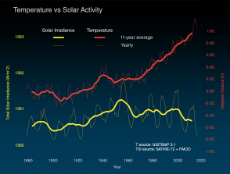
>>106754
> First, no known physical mechanism has yet been found, explaining exactly how a change in solar activity affects Earth’s climate.
False.
>Patterns of solar irradiance and solar variation has been a main driver of climate change over the millennia to gigayears of the geologic time scale, but its role in the recent warming has been found to be insignificant.
https://en.wikipedia.org/wiki/Solar_activity_and_climate also pic.
Since this isn't a climate change thread it is enough to say that the previous posts using climate as a proxy for sunspots is still valid for pre-1960s at least.
The wibbly-wobbly sun core makes the sunspot cycle but intrusions of space rocks add chaos to that/those (multi-layered) sine wave(s). The solar core could have multiple types of rotations occurring at once.
[Read more] > First, no known physical mechanism has yet been found, explaining exactly how a change in solar activity affects Earth’s climate.
False.
>Patterns of solar irradiance and solar variation has been a main driver of climate change over the millennia to gigayears of the geologic time scale, but its role in the recent warming has been found to be insignificant.
https://en.wikipedia.org/wiki/Solar_activity_and_climate also pic.
Since this isn't a climate change thread it is enough to say that the previous posts using climate as a proxy for sunspots is still valid for pre-1960s at least.
The wibbly-wobbly sun core makes the sunspot cycle but intrusions of space rocks add chaos to that/those (multi-layered) sine wave(s). The solar core could have multiple types of rotations occurring at once.
1564499507.mp4 (6.5 MB, Resolution:720x404 Length:00:02:20, Hikers_experience_electric_shocks_on_Colorado_14ers_over_the.mp4) [play once] [loop]

Since you are appreciating electricity so much lately Afternon, I thought you might enjoy this.
>>106745
>Experimenting with topographical crater comparisons between planetary bodies & moons. Current status: limited theory unless further access acquired. Basic technical data: abnormal % of similarities resulting from high density asteroid impacts on third planet from fun, third planet from fun's moon, & Jupiter. End result: few discrepancies, impact craters remain largely the same. Will update if able.
One possibility is that the debris has been made magnetic. What would happen to a cold plasma? superconductor? Would the nuclei rotations align? causing EM and GEM macroscopic effects? The rotating "ring" of material could be a rotating mag. and gravito-mag. field. Causing a E and gravito-E field. This would interact with Earth and Jupiter mostly (for our purposes) through both gravity and magnetism.
>Earth mag. field = 1.00
>Mercury = 0.006
>Venus = 0
>Mars = 0
>Jupiter = 19,519
>Saturn = 578
>Uranus = 47.9
>Neptune = 27.0
>Pluto = 0
https://www.astronomynotes.com/solarsys/plantblb.htm
[Read more] >Experimenting with topographical crater comparisons between planetary bodies & moons. Current status: limited theory unless further access acquired. Basic technical data: abnormal % of similarities resulting from high density asteroid impacts on third planet from fun, third planet from fun's moon, & Jupiter. End result: few discrepancies, impact craters remain largely the same. Will update if able.
One possibility is that the debris has been made magnetic. What would happen to a cold plasma? superconductor? Would the nuclei rotations align? causing EM and GEM macroscopic effects? The rotating "ring" of material could be a rotating mag. and gravito-mag. field. Causing a E and gravito-E field. This would interact with Earth and Jupiter mostly (for our purposes) through both gravity and magnetism.
>Earth mag. field = 1.00
>Mercury = 0.006
>Venus = 0
>Mars = 0
>Jupiter = 19,519
>Saturn = 578
>Uranus = 47.9
>Neptune = 27.0
>Pluto = 0
https://www.astronomynotes.com/solarsys/plantblb.htm
>>106745
Also notice that the colours of UFOs in 1944 >>104640 are red-orange-yellow with a small amount of silver, this then diversifies a bit in 1945, then in 1946 red-orange-yellow fades away, and by 1947 they are overwhelmingly silver-shiny-white. Could this be a 3 year cool down of the debris from red-hot to silver cold superconductors? What length of time is needed to cool down in space? No conduction, no convection, just radiation. And that would make the surface crust shrink while the core remains the same size and hotter.
Also notice that the colours of UFOs in 1944 >>104640 are red-orange-yellow with a small amount of silver, this then diversifies a bit in 1945, then in 1946 red-orange-yellow fades away, and by 1947 they are overwhelmingly silver-shiny-white. Could this be a 3 year cool down of the debris from red-hot to silver cold superconductors? What length of time is needed to cool down in space? No conduction, no convection, just radiation. And that would make the surface crust shrink while the core remains the same size and hotter.
>>106747
>#1: 'Angel hair'
I heard once Angel Hair explained as chains of ionised oxygen. No idea if valid.
>#2: 6:30PM to 10:45PM
Audaciously funny. Is that why the LGMs were put on show, to confuse the public about legitimate human secret aircraft.
>there are still no mermaids
:(
>>106748
I think when we have finished playing with solar system cycles and sulphur we should do a step, year by year, through 1943 to 1970s. And pull in the fake aliens, secret aircraft and 2002 XM35 etc astronomy cycles/orbits and see if we can cover all the mysteries via combinations of those 3 explanations.
[Read more] >#1: 'Angel hair'
I heard once Angel Hair explained as chains of ionised oxygen. No idea if valid.
>#2: 6:30PM to 10:45PM
Audaciously funny. Is that why the LGMs were put on show, to confuse the public about legitimate human secret aircraft.
>there are still no mermaids
:(
>>106748
I think when we have finished playing with solar system cycles and sulphur we should do a step, year by year, through 1943 to 1970s. And pull in the fake aliens, secret aircraft and 2002 XM35 etc astronomy cycles/orbits and see if we can cover all the mysteries via combinations of those 3 explanations.
>>106833
>Could this be a 3 year cool down of the debris from red-hot to silver cold superconductors?
The argument against a 1943 collision is the great sunspots start in 1946 on one side of Mercury and the Ghost Rockets on Earth on the other side of Mercury.
A more encompassing hypothesis would be that Mercury collisions are caused by orbiting rocks loosing momentum and spiralling closer to the sun. The best explanation for this is minor collisions in the Asteroid Belt. This could give us the relatively minor amount of Foo Fighters pre-1946 and then the main event 1946-1947.
>Could this be a 3 year cool down of the debris from red-hot to silver cold superconductors?
The argument against a 1943 collision is the great sunspots start in 1946 on one side of Mercury and the Ghost Rockets on Earth on the other side of Mercury.
A more encompassing hypothesis would be that Mercury collisions are caused by orbiting rocks loosing momentum and spiralling closer to the sun. The best explanation for this is minor collisions in the Asteroid Belt. This could give us the relatively minor amount of Foo Fighters pre-1946 and then the main event 1946-1947.
1564551139_1.pdf (5.4 MB, , 10.1016\/j.epsl.2015.01.023--Evidence for geochemical terranes on Mercury--includes HMR magnesium data.pdf)
1564551139_2.png (67.3 KB, 800x800, 800px-Mercury's_orbital_resonance.svg.png)
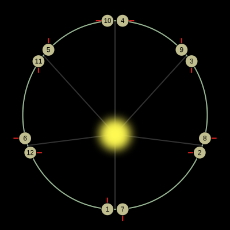
>>106749
>Mercury. First question: how negligible IS Mercury's electromagnetic capture field?
0.006 of Earth, less than 1%. Also worth noting that at Mercury closeness 2002 XM35 would be travelling at ~50km/s (180,000 km/h), and Mercury is travelling at ~40km/s. Collision is at about 10km/s (36,000km/h). It seems unlikely a magnetic field has much input on the collision point, perhaps on the debris though.
>There is a High Magnesium Region & a Low Magnesium Region.
The Caloris Basin.
>Caloris Planitia is a plain within a large impact basin on Mercury, informally named Caloris, about 1,550 km (960 mi) in diameter.[1] It is one of the largest impact basins in the Solar System. "Calor" is Latin for "heat" and the basin is so-named because the Sun is almost directly overhead every second time Mercury passes perihelion. The crater, discovered in 1974, is surrounded by the Caloris Montes, a ring of mountains approximately 2 km (1.2 mi) tall.
https://en.wikipedia.org/wiki/Caloris_Planitia
Attaching a science paper also which shows the Mg free Caloris Basin.
Second question: is 'electromorphogenic field' theory correct since HMR impacts occur during waning planet cycle-sun cycle rotations & LMR occurs during upswings?
I can't find anything mentioning 'electromorphogenic field', dead end. And no because every second Mercury orbit, Mercury is 180 degrees rotated. Therefore repetitious events at the same location in orbit would make 2 regions on the Mercury surface 180 degree opposite each other. Their is no explanation which allows both repetition and one surface feature on Mercury (unless the repetition fluked being in a multiple of 2x88 days exactly and did not drift over time, unlikely.)
>Mercury is tidally locked with the Sun in a 3:2 spin-orbit resonance,[15] and rotates in a way that is unique in the Solar System. As seen relative to the fixed stars, it rotates on its axis exactly three times for every two revolutions it makes around the Sun.[a][16] As seen from the Sun, in a frame of reference that rotates with the orbital motion, it appears to rotate only once every two Mercurian years. An observer on Mercury would therefore see only one day every two Mercurian years.
https://en.wikipedia.org/wiki/Mercury_(planet)
(pic) from wikipedia shows this well.
[Read more] >Mercury. First question: how negligible IS Mercury's electromagnetic capture field?
0.006 of Earth, less than 1%. Also worth noting that at Mercury closeness 2002 XM35 would be travelling at ~50km/s (180,000 km/h), and Mercury is travelling at ~40km/s. Collision is at about 10km/s (36,000km/h). It seems unlikely a magnetic field has much input on the collision point, perhaps on the debris though.
>There is a High Magnesium Region & a Low Magnesium Region.
The Caloris Basin.
>Caloris Planitia is a plain within a large impact basin on Mercury, informally named Caloris, about 1,550 km (960 mi) in diameter.[1] It is one of the largest impact basins in the Solar System. "Calor" is Latin for "heat" and the basin is so-named because the Sun is almost directly overhead every second time Mercury passes perihelion. The crater, discovered in 1974, is surrounded by the Caloris Montes, a ring of mountains approximately 2 km (1.2 mi) tall.
https://en.wikipedia.org/wiki/Caloris_Planitia
Attaching a science paper also which shows the Mg free Caloris Basin.
Second question: is 'electromorphogenic field' theory correct since HMR impacts occur during waning planet cycle-sun cycle rotations & LMR occurs during upswings?
I can't find anything mentioning 'electromorphogenic field', dead end. And no because every second Mercury orbit, Mercury is 180 degrees rotated. Therefore repetitious events at the same location in orbit would make 2 regions on the Mercury surface 180 degree opposite each other. Their is no explanation which allows both repetition and one surface feature on Mercury (unless the repetition fluked being in a multiple of 2x88 days exactly and did not drift over time, unlikely.)
>Mercury is tidally locked with the Sun in a 3:2 spin-orbit resonance,[15] and rotates in a way that is unique in the Solar System. As seen relative to the fixed stars, it rotates on its axis exactly three times for every two revolutions it makes around the Sun.[a][16] As seen from the Sun, in a frame of reference that rotates with the orbital motion, it appears to rotate only once every two Mercurian years. An observer on Mercury would therefore see only one day every two Mercurian years.
https://en.wikipedia.org/wiki/Mercury_(planet)
(pic) from wikipedia shows this well.
>>106749
>Either I interpreted the data wrong or the dataset was wrong. Seems mixture of both. >>106459 shows oddly high % sulphur abundance. Which Mercury-glanced swarm features highest sulphur percentages?
>The input of meteoric sulphur (S) into the Earth's atmosphere has been usually considered negligible compared to the surface emissions in terms of mesospheric and stratospheric impacts.
-- https://ui.adsabs.harvard.edu/abs/2016AGUFMSA51A2410G/abstract
So S in meteors is considered negligible, this paper wonders if the sulphur went to the poles though.
But I may have made a slight error suggesting that this excess S near the sun is from leached asteroids only, because there is a massive source of Sulphur near the sun.... Mercury itself.
>Mercury appears to have a solid silicate crust and mantle overlying a solid, iron sulfide outer core layer, a deeper liquid core layer, and a solid inner core.
https://en.wikipedia.org/wiki/Mercury_(planet)#Internal_structure
Scraping the silicate crust off Mercury would expose iron sulphide (of which there are many types: https://en.wikipedia.org/wiki/Iron_sulfide ) to space. And then there is the possibility that the sulphur near the sun is part of historical solar system creation. Nature gives near infinite choices leaving us bewildered.
[Read more] >Either I interpreted the data wrong or the dataset was wrong. Seems mixture of both. >>106459 shows oddly high % sulphur abundance. Which Mercury-glanced swarm features highest sulphur percentages?
>The input of meteoric sulphur (S) into the Earth's atmosphere has been usually considered negligible compared to the surface emissions in terms of mesospheric and stratospheric impacts.
-- https://ui.adsabs.harvard.edu/abs/2016AGUFMSA51A2410G/abstract
So S in meteors is considered negligible, this paper wonders if the sulphur went to the poles though.
But I may have made a slight error suggesting that this excess S near the sun is from leached asteroids only, because there is a massive source of Sulphur near the sun.... Mercury itself.
>Mercury appears to have a solid silicate crust and mantle overlying a solid, iron sulfide outer core layer, a deeper liquid core layer, and a solid inner core.
https://en.wikipedia.org/wiki/Mercury_(planet)#Internal_structure
Scraping the silicate crust off Mercury would expose iron sulphide (of which there are many types: https://en.wikipedia.org/wiki/Iron_sulfide ) to space. And then there is the possibility that the sulphur near the sun is part of historical solar system creation. Nature gives near infinite choices leaving us bewildered.
>>106749
>2001
>Nickel was present from 43PPM to 49PPM
density 8.8
>copper was present at 55PPM to 61PPM,
density 9.0
>chromium at 68PPM to 72PPM,
density 7.2
>manganese at 59PPM to 61PPM
density 6.0
>while titanium was discovered to have a surprising amount from 324PPM to 403PPM.
density 4.5
Because titanium alloys have high tensile strength to density ratio,[11] high corrosion resistance,[7] fatigue resistance, high crack resistance,[72] and ability to withstand moderately high temperatures without creeping, they are used in aircraft, armour plating, naval ships, spacecraft, and missiles.[7][8] For these applications, titanium is alloyed with aluminium, zirconium, nickel,[73] vanadium, and other elements to manufacture a variety of components including critical structural parts, fire walls, landing gear, exhaust ducts (helicopters), and hydraulic systems. In fact, about two thirds of all titanium metal produced is used in aircraft engines and frames.
-- https://en.wikipedia.org/wiki/Titanium#Aerospace_and_marine
Atmosheric re-entry burn up of man-made satelites/aerospacecraft?
>1.9 to 3.7% hydrogen } ?
>4.2 to 5.9% hydrogen } ?
>43-51% carbon makeup,
did they bury the pilots remains? ... or graphite
>with no detectable amounts of sodium
>or silicon elements present.
density 2.6
No silicon argues against space rocks.
Are these elements and ratio of then consistent with craft? Is there a standard burn up de-orbit path? Can regular use of said path cause this?
[Read more] >2001
>Nickel was present from 43PPM to 49PPM
density 8.8
>copper was present at 55PPM to 61PPM,
density 9.0
>chromium at 68PPM to 72PPM,
density 7.2
>manganese at 59PPM to 61PPM
density 6.0
>while titanium was discovered to have a surprising amount from 324PPM to 403PPM.
density 4.5
Because titanium alloys have high tensile strength to density ratio,[11] high corrosion resistance,[7] fatigue resistance, high crack resistance,[72] and ability to withstand moderately high temperatures without creeping, they are used in aircraft, armour plating, naval ships, spacecraft, and missiles.[7][8] For these applications, titanium is alloyed with aluminium, zirconium, nickel,[73] vanadium, and other elements to manufacture a variety of components including critical structural parts, fire walls, landing gear, exhaust ducts (helicopters), and hydraulic systems. In fact, about two thirds of all titanium metal produced is used in aircraft engines and frames.
-- https://en.wikipedia.org/wiki/Titanium#Aerospace_and_marine
Atmosheric re-entry burn up of man-made satelites/aerospacecraft?
>1.9 to 3.7% hydrogen } ?
>4.2 to 5.9% hydrogen } ?
>43-51% carbon makeup,
did they bury the pilots remains? ... or graphite
>with no detectable amounts of sodium
>or silicon elements present.
density 2.6
No silicon argues against space rocks.
Are these elements and ratio of then consistent with craft? Is there a standard burn up de-orbit path? Can regular use of said path cause this?
>Hubble spots a football-shaped planet leaking heavy metals into space
...
>And WASP-121b’s extreme heat is totally new. That’s what allows not just light gases like hydrogen and helium, but even heavy metals like iron and magnesium, to stream away. Usually, these heavier materials stay condensed in a planet’s lower atmosphere, even at scorching temperatures. But WASP-121b’s 4,600 degrees Fahrenheit [2538C] is enough to loft even heavy metals high into the atmosphere, where the planet appears to be losing them.
...
-- http://www.astronomy.com/news/2019/08/hubble-spots-a-football-shaped-planet-leaking-heavy-metals-into-space
>A meteor impact can reach up to 2370C on Earth
>>87736
...
>And WASP-121b’s extreme heat is totally new. That’s what allows not just light gases like hydrogen and helium, but even heavy metals like iron and magnesium, to stream away. Usually, these heavier materials stay condensed in a planet’s lower atmosphere, even at scorching temperatures. But WASP-121b’s 4,600 degrees Fahrenheit [2538C] is enough to loft even heavy metals high into the atmosphere, where the planet appears to be losing them.
...
-- http://www.astronomy.com/news/2019/08/hubble-spots-a-football-shaped-planet-leaking-heavy-metals-into-space
>A meteor impact can reach up to 2370C on Earth
>>87736
Obscure technological achievements:
-first wired voice message pager developed in May, 1949. Based on OSS works from 1943-48, taken over by La Sia.
-first wireless voice/text pager debuted in March, 1950 for Jew-S Royal Crown Marine, Chair Farce, Navy usage. Range: 35-50 miles (ground), 150-300 miles (sea).
-first long ranged wireless text/text-to-voice pager debuted in January 1951. Range: 60-100 miles (ground), 200-400 miles (sea).
-first multi-level (battalion) command pager system debuted in June 1952. Range: 150-200 miles (ground), 400-800 miles (sea).
Information was being transmitted on otherwise secure OSS/La Sia/Pissad/MI5/MI6 channels 2 decades before civil technologies "caught up". Fuck coincidences.
-first wired voice message pager developed in May, 1949. Based on OSS works from 1943-48, taken over by La Sia.
-first wireless voice/text pager debuted in March, 1950 for Jew-S Royal Crown Marine, Chair Farce, Navy usage. Range: 35-50 miles (ground), 150-300 miles (sea).
-first long ranged wireless text/text-to-voice pager debuted in January 1951. Range: 60-100 miles (ground), 200-400 miles (sea).
-first multi-level (battalion) command pager system debuted in June 1952. Range: 150-200 miles (ground), 400-800 miles (sea).
Information was being transmitted on otherwise secure OSS/La Sia/Pissad/MI5/MI6 channels 2 decades before civil technologies "caught up". Fuck coincidences.
>Understanding the physical processes that release atoms and molecules from Mercury's surface into its exosphere (highly tenuous atmosphere) has been a major challenge because it is difficult to observe Mercury from the ground or Earth's orbit. From its orbit around the planet, the Mercury Surface, Space ENvironment, GEochemistry, and Ranging mission provided the first detailed view of Mercury's surface composition and its space environment. Because Mercury is an airless body, its exosphere must constantly be replenished, and it has been assumed that it is directly sourced from the planet's surface. However, a direct observation connecting the surface and the exosphere was not possible until the Mercury Surface, Space ENvironment, GEochemistry, and Ranging mission. Using observations of exospheric magnesium (Mg) and colocating them with a Mg‐rich region of Mercury's surface shows for the first time that such a link exists. The results suggest that incoming micrometeoroid particles (dust) can access the surface crustal composition directly and release Mg atoms into the surrounding environment. Our work will inform future exospheric models and provide insights into airless body processes for both other solar system objects and Mercury‐like exoplanets.
https://agupubs.onlinelibrary.wiley.com/doi/10.1029/2018GL078407
https://agupubs.onlinelibrary.wiley.com/doi/10.1029/2018GL078407
Mercury collision hypothesis (as the main cause) is dead.
I was bored and so I decided to start looking at geological science papers in the hopes of discovering some mention of natural thermite. I did a search for magnesium at https://agupubs.onlinelibrary.wiley.com/action/doSearch? and discovered >>107205 and then:
https://agupubs.onlinelibrary.wiley.com/doi/10.1002/2016JE005244
>Although the HMR covers approximately 15% of Mercury's surface, its origin is not obvious. It does roughly correspond to a depression with thin crust, which previously led to the hypothesis that it is an ancient impact crater that was large enough to excavate mantle material, which, in rocky planets, is rich in magnesium relative to their crust. Here we use a model to simulate how such a crater would look and compare the results to data collected by MESSENGER. We find that the processes required to erase clear physical signs of an HMR‐scale crater should also have erased the strong chemical signature of the HMR. Thus, we conclude that the HMR is more likely due to high‐temperature volcanism than a mantle‐excavating impact.
and
>Consequently, the high‐Mg region is more likely to be the product of high‐temperature volcanism sourced from a chemically heterogeneous mantle than the remains of a large impact event.
Basically, the valley of the HMR doesn't look like a large crater despite being low. And any, over time, erosion of large crater features would also have removed the Mg as well.
They suggest the high Mg is from a high Mg section of the mantel under the thin crust. But the important part is that if an impact occurred in 1946, the large crater features should still be visible, but they aren't. In contrast, the Caloris Basin is a huge crater said to be millions of years old.
How to rescue the hypothesis?
I ponder that a collision was not involved and it was a close flyby break up. If 2002 XM35 is our proxy and it's orbit is 3.57 years, and Mercury is 87.97 days then how often would the close flyby break up occur?
The break up might include fracturing the thin HMR valley crust exposing Mg rich mantel leading to volcanism. Which might then get pulled along in 2002 XM35's wake or pushed up due to pressure, or 2002 XM35 might bring its own Mg and splashed Mercury on the flyby.
I then wondered how to test for these flybys. If I times the days of Mercury orbit by the days of 2002 XM35 orbit and then divide that by 365.24, I get 314 years for repeating flybys. This sounded suspiciously close the weather cycles >>106754 and Armstrong's civilization cycles (pic1). I then decided to look at 1946 - 314 = year 1632. Looking at the history of UFOs and meteors showed nothing similar to 1946/7 in the 1620-1630s time frame. A dead end. So I decided the ~300 year cycle of Armstrong/weather/sun needed a deeper look.
>"Heartbeat of the Sun from Principal Component Analysis and prediction of solar activity on a millenium timescale"
-- https://www.nature.com/articles/srep15689
This is an awesome paper where scientists looked at the sun spot cycle with software to attempt to tease out the components that lead to the rise and fall of sun spots. They discovered 8 "Principal Components", which I will rename, 8 cycles within the sun. There may be more. However, thankfully, 97% of sun spot activity could be explained by 2 of those cycles.
By plotting the in-phase and out-of-phase effects of these 2 cycles they discover:
>The summary curve reveals a superposition of the amplitudes of the two dynamo waves, or a ‘beating’ effect creating two resulting waves: one of higher frequency (corresponding to a classic 22-year cycle)* and a second wave of lower frequency (corresponding to a period of about 350–400 years)^, which modulates the amplitude of the first wave. It appears that this grand cycle has a variable length from 320 years (in 18–20 centuries) to 400^ (in 2300–2700) predicted for the next millennium. Amplitudes in the shorter grand cycles are much higher than the amplitudes in the longer ones.
* the 22 year cycle is 2 of the 11 year sun spot cycles. Each alternate 11 year sun spot cycle has the poles reversed. Therefore a complete cycle is 2 x 11 years.
+ the 320-450 year cycle is the Armstrong-civilization/weather cycle, and what these scientists call the "grand [solar] cycle".
The maths allows the prediction of sun spots, and therefore the sun's magnetic field strength, which comes from the convection layer(s), which comes from the core's heat. In short it predicts the solar output. Solar output affects the weather (ice/snow, plant growth) which in turn affects the sustainability of a civilization. A starving, economically failing civilization can't be civilized.
But what has this to do with UFOs? I have shown in >>102272 that sun spots and UFOs correlate. And that the 1946/7 exceptional UFO waves were preceded by the very first exceptional Great Sunspot of January 29, 1946 with it's metallic prominence. If Mercury did not initiate the launching of a massive amount of Mg into space, did the sun? Can the sun eject metal?
How does 1946/7 compare on the chart produced by the scientists? pic2 shows that the sun's churn was at it's highest during the Ghost Rockets and Flying Discs. At >>101892 scientists talk about a metallic prominence over the Great Sunspot. In >>104637 shows metallic prominenses was a reference to actual metal. And historically:
>The earth placed beside them [sun spots] would be but a speck, and yet they are mere pits in the surface of the sun, filled perhaps with partially cooled metallic vapors, which have been It is worth cast up from the interior, and are settling back again.
-- Popular Science Monthly Volume 31 (1887), page 492 - https://archive.org/details/popularsciencemo31newy/page/490
Does the sun go through a period every ~350 years of throwing out metal? Can we test this? What if we look at the previous grand cycle? (pic2)
(cont.)
\r
[Read more] I was bored and so I decided to start looking at geological science papers in the hopes of discovering some mention of natural thermite. I did a search for magnesium at https://agupubs.onlinelibrary.wiley.com/action/doSearch? and discovered >>107205 and then:
https://agupubs.onlinelibrary.wiley.com/doi/10.1002/2016JE005244
>Although the HMR covers approximately 15% of Mercury's surface, its origin is not obvious. It does roughly correspond to a depression with thin crust, which previously led to the hypothesis that it is an ancient impact crater that was large enough to excavate mantle material, which, in rocky planets, is rich in magnesium relative to their crust. Here we use a model to simulate how such a crater would look and compare the results to data collected by MESSENGER. We find that the processes required to erase clear physical signs of an HMR‐scale crater should also have erased the strong chemical signature of the HMR. Thus, we conclude that the HMR is more likely due to high‐temperature volcanism than a mantle‐excavating impact.
and
>Consequently, the high‐Mg region is more likely to be the product of high‐temperature volcanism sourced from a chemically heterogeneous mantle than the remains of a large impact event.
Basically, the valley of the HMR doesn't look like a large crater despite being low. And any, over time, erosion of large crater features would also have removed the Mg as well.
They suggest the high Mg is from a high Mg section of the mantel under the thin crust. But the important part is that if an impact occurred in 1946, the large crater features should still be visible, but they aren't. In contrast, the Caloris Basin is a huge crater said to be millions of years old.
How to rescue the hypothesis?
I ponder that a collision was not involved and it was a close flyby break up. If 2002 XM35 is our proxy and it's orbit is 3.57 years, and Mercury is 87.97 days then how often would the close flyby break up occur?
The break up might include fracturing the thin HMR valley crust exposing Mg rich mantel leading to volcanism. Which might then get pulled along in 2002 XM35's wake or pushed up due to pressure, or 2002 XM35 might bring its own Mg and splashed Mercury on the flyby.
I then wondered how to test for these flybys. If I times the days of Mercury orbit by the days of 2002 XM35 orbit and then divide that by 365.24, I get 314 years for repeating flybys. This sounded suspiciously close the weather cycles >>106754 and Armstrong's civilization cycles (pic1). I then decided to look at 1946 - 314 = year 1632. Looking at the history of UFOs and meteors showed nothing similar to 1946/7 in the 1620-1630s time frame. A dead end. So I decided the ~300 year cycle of Armstrong/weather/sun needed a deeper look.
>"Heartbeat of the Sun from Principal Component Analysis and prediction of solar activity on a millenium timescale"
-- https://www.nature.com/articles/srep15689
This is an awesome paper where scientists looked at the sun spot cycle with software to attempt to tease out the components that lead to the rise and fall of sun spots. They discovered 8 "Principal Components", which I will rename, 8 cycles within the sun. There may be more. However, thankfully, 97% of sun spot activity could be explained by 2 of those cycles.
By plotting the in-phase and out-of-phase effects of these 2 cycles they discover:
>The summary curve reveals a superposition of the amplitudes of the two dynamo waves, or a ‘beating’ effect creating two resulting waves: one of higher frequency (corresponding to a classic 22-year cycle)* and a second wave of lower frequency (corresponding to a period of about 350–400 years)^, which modulates the amplitude of the first wave. It appears that this grand cycle has a variable length from 320 years (in 18–20 centuries) to 400^ (in 2300–2700) predicted for the next millennium. Amplitudes in the shorter grand cycles are much higher than the amplitudes in the longer ones.
* the 22 year cycle is 2 of the 11 year sun spot cycles. Each alternate 11 year sun spot cycle has the poles reversed. Therefore a complete cycle is 2 x 11 years.
+ the 320-450 year cycle is the Armstrong-civilization/weather cycle, and what these scientists call the "grand [solar] cycle".
The maths allows the prediction of sun spots, and therefore the sun's magnetic field strength, which comes from the convection layer(s), which comes from the core's heat. In short it predicts the solar output. Solar output affects the weather (ice/snow, plant growth) which in turn affects the sustainability of a civilization. A starving, economically failing civilization can't be civilized.
But what has this to do with UFOs? I have shown in >>102272 that sun spots and UFOs correlate. And that the 1946/7 exceptional UFO waves were preceded by the very first exceptional Great Sunspot of January 29, 1946 with it's metallic prominence. If Mercury did not initiate the launching of a massive amount of Mg into space, did the sun? Can the sun eject metal?
How does 1946/7 compare on the chart produced by the scientists? pic2 shows that the sun's churn was at it's highest during the Ghost Rockets and Flying Discs. At >>101892 scientists talk about a metallic prominence over the Great Sunspot. In >>104637 shows metallic prominenses was a reference to actual metal. And historically:
>The earth placed beside them [sun spots] would be but a speck, and yet they are mere pits in the surface of the sun, filled perhaps with partially cooled metallic vapors, which have been It is worth cast up from the interior, and are settling back again.
-- Popular Science Monthly Volume 31 (1887), page 492 - https://archive.org/details/popularsciencemo31newy/page/490
Does the sun go through a period every ~350 years of throwing out metal? Can we test this? What if we look at the previous grand cycle? (pic2)
(cont.)
\r
(cont.)
The previous grand solar cycle would have the high end of the output at about the years 1400-1600. Do we have anything like the Ghost Rockets and Flying Discs in that time frame? Yes, actually we do...
>>65815 https://en.wikipedia.org/wiki/1561_celestial_phenomenon_over_Nuremberg and
>>65817 https://en.wikipedia.org/wiki/1566_celestial_phenomenon_over_Basel
Are these the previous solar grand cycles' Natural UFOs?
What metal would the sun toss into space if it could? (pic1) https://en.wikipedia.org/wiki/Stellar_nucleosynthesis
It's our old friends; Mg, Si, Fe. Mg being the easiest.
The rest of this hypothesis would be just showing how. The convection currents for the sun are rotating ions, rotating charge makes magnetic fields, magnetic fields lead to natural rail guns. And here I was laughing at your "Red Spot of Jupiter Natural Rail Gun (RSJNRG)" and now I am proposing the "Solar Natural Rail Gun (SNRG)™".
Understanding the process is better done with visuals:
https://youtu.be/BeVjM0h_iRg
https://youtu.be/ppGgyc7BjsQ
and >>104636 pics.
The sun has horizontal magnetic field lines that orbit within the sun. I assume sun spots are like our atmospheric weather cells, it is caused by the circumference length difference at different latitudes. This causes non-equatorial flow to move slower than the equator. This speed difference causes eddies. The sun gets magnetic eddies -> sun spots. And we get wind eddies -> low pressure systems -> cyclones, hurricanes.
The science paper updates the old model of the sun by replacing the 1 layer of convection (as shown in the visuals above) with 2 convection layers (pic2). Both of these layers migrate north and south but not in unison (they are different sizes for example). They are out of phase. When they are close to each other -> major sunspots and presumably major gouging into the solar core. This digs up metal and ultimately throws it into space. Since a sun spot can be larger than the Earth the amount of metal thrown is staggering to contemplate >>101892 size of Earth bottom left corner.
The Great Sun Spot of 1946 may have started the Ghost Rockets and Flying Saucers. The HMR may even be the sun splashing Mercury with Mg. And the solar spin up of the previous grand cycle gave us 1560's celestial phenomena. Space collision leading to metal objects probably does happen but it is nothing compared to the sun throwing metal.
[Read more] The previous grand solar cycle would have the high end of the output at about the years 1400-1600. Do we have anything like the Ghost Rockets and Flying Discs in that time frame? Yes, actually we do...
>>65815 https://en.wikipedia.org/wiki/1561_celestial_phenomenon_over_Nuremberg and
>>65817 https://en.wikipedia.org/wiki/1566_celestial_phenomenon_over_Basel
Are these the previous solar grand cycles' Natural UFOs?
What metal would the sun toss into space if it could? (pic1) https://en.wikipedia.org/wiki/Stellar_nucleosynthesis
It's our old friends; Mg, Si, Fe. Mg being the easiest.
The rest of this hypothesis would be just showing how. The convection currents for the sun are rotating ions, rotating charge makes magnetic fields, magnetic fields lead to natural rail guns. And here I was laughing at your "Red Spot of Jupiter Natural Rail Gun (RSJNRG)" and now I am proposing the "Solar Natural Rail Gun (SNRG)™".
Understanding the process is better done with visuals:
https://youtu.be/BeVjM0h_iRg
https://youtu.be/ppGgyc7BjsQ
and >>104636 pics.
The sun has horizontal magnetic field lines that orbit within the sun. I assume sun spots are like our atmospheric weather cells, it is caused by the circumference length difference at different latitudes. This causes non-equatorial flow to move slower than the equator. This speed difference causes eddies. The sun gets magnetic eddies -> sun spots. And we get wind eddies -> low pressure systems -> cyclones, hurricanes.
The science paper updates the old model of the sun by replacing the 1 layer of convection (as shown in the visuals above) with 2 convection layers (pic2). Both of these layers migrate north and south but not in unison (they are different sizes for example). They are out of phase. When they are close to each other -> major sunspots and presumably major gouging into the solar core. This digs up metal and ultimately throws it into space. Since a sun spot can be larger than the Earth the amount of metal thrown is staggering to contemplate >>101892 size of Earth bottom left corner.
The Great Sun Spot of 1946 may have started the Ghost Rockets and Flying Saucers. The HMR may even be the sun splashing Mercury with Mg. And the solar spin up of the previous grand cycle gave us 1560's celestial phenomena. Space collision leading to metal objects probably does happen but it is nothing compared to the sun throwing metal.
UFOCAT sightings from 1300s to 1880s. Range is chosen to try and catch the last solar grand cycle and the current one >>107577 reports of what modern UFO researchers have back-classified as UFOs began to ramp up at about the same time as the sun ramped up. (pic1)
Reducing the chart to 1300s-1600s to show only the last grand cycle shows an out-of-place spike in 1640s when the sun should be at minimum. (pic2) Examining 1640s:
>"Year of the birth of Our Lord Jesus Christ 1641, May 9th, in this city of Braga, in the lodgings of Reverend Doctor Jao d'Abreda Rocha, ecclesiastic judge and general vicar of this court, the archbishop of Braga: there the Reverend Judge was alerted by D. Gastao Coutinho, general of the province of Entre Douro e Minho, of the fact that many people going towards the area of Porto acting upon a warning given in this city that the enemies were approaching in that area, saw some signs on the moon, in which there appeared a Wafer and two human figures that looked like Angels; and that the said judge know the truth of it: about which the Reverend Doctor ordered this writ to be made, that I sign; and he asked the following witnesses. Father Simao Alvares, apostolic notary, wrote it.
>4 May 1641, Madrid, Spain: Unexplained black cloud
>At 9:00 P.M., "the sky being very calm, without there being a single cloud in it, (Jose Pellicer reported) an extremely black and dark cloud, that approached from somewhere between the east and the north, dilated and narrow, crossing between the west and Midday, that was stationary for some time" .. The people there heard "loud noises, bugles, drums, as if an invisible ferocious battle were happening but without anything to be seen."
>14 September 1641, Akhaltsike, Georgia
>"the ether on the eastern side was torn up and a big dark-blue light began to descend. Being wide and long, it came down approaching the Earth and it illuminated everything around, more brightly than the sun." The forward part of the light "revolved like a wheel, moving to the north, calmly and slowly emitting red and white light, and in front of the light, at a distance of an open hand, there was a star the size of Venus. The light was still visible until my father had sung, weeping, six sharakans, after which it moved away. Later we heard that people saw this miraculous light up to Akhaltsike."
>3 July 1642, Olesa de Montserrat, Catalonia, Spain
>Joseph Aguilera and others saw a globe changing to "three moons," later an enormous light seen for one hour.
>18 January 1644, Boston, Mass.
>Three men coming to Boston saw two "man-shaped lights" come out of the sea. About 8 P.M. several inhabitants of an area of Boston located near the sea saw a light the size of the full moon rise in the northeast. Shortly thereafter, another light appeared in the east. The witnesses observed a curious game of hide-and-seek between the two objects. During this celestial ballet, several persons known to be sober and pious, who were aboard a boat between Dorchester and Boston, claimed they heard a voice in the sky uttering the following words in a most terrible voice: "Boy, boy, come away..." These calls were repeated about 20 times, coming from various directions.
>25 January 1644, Boston, Massachusetts
>Luminous objects were seen sparkling, emitting flames. Again, the aerial ballet of the previous week was observed and a voice calling out: "Boy, boy, come away."
>April 1645, Caudan, Brittany, France
>A Procession of sky beings A sixty-year old man named Jean Coachon, who lived in Calan, near Lanvodan and Vannes, stated that he had witnessed a procession of sky beings he called "angels," circling above the church, with the Virgin among them. This was related by the Lord of Lestour, who collected such stories.
>11 November 1645, Location unknown
>A body large enough to be a satellite was seen near Venus from Naples by the astronomer Francesco Fontana. He made further observations of the "satellite" on December 25th 1645 and January 22nd, 1646. Jean-Charles Houzeau, director of the Royal Observatory of Brussels, baptized the satellite with the name "Neith" in the 1880s.
>May 1646, The Hague, Netherlands
>Unknown people and animals were seen in the sky of The Hague. A fleet of airships came from the southeast, carrying many occupants. It came close to the aerial spectacle. A huge fight ensued. When the phenomenon vanished, people saw "something like a huge cloud that appeared at a place where nothing was visible before."
>21 May 1646, Newmarket & Thetford, England
>"Betwixt Newmarket and Thetford in the foresaid county of Suffolk, there was observed a pillar or a Cloud to ascend from the earth, with the bright hilts of a sword towards the bottom of it, which piller (sic) did ascend in a pyramidal form, and fashioned it self into the forme of a spire or broach Steeple, and there descended also out of the skye, the forme of a Pike or Lance, with a very sharp head or point (...) This continued for an hour and a half.
-- Wonders in the Sky by Vallee.
And the finding of the investigations of 1640s UFOs is (pic3). Some might be actual human airships, some are hallucinations (or angels exist), some are natural astronomical phenomena. All of them are odd :)
[Read more] Reducing the chart to 1300s-1600s to show only the last grand cycle shows an out-of-place spike in 1640s when the sun should be at minimum. (pic2) Examining 1640s:
>"Year of the birth of Our Lord Jesus Christ 1641, May 9th, in this city of Braga, in the lodgings of Reverend Doctor Jao d'Abreda Rocha, ecclesiastic judge and general vicar of this court, the archbishop of Braga: there the Reverend Judge was alerted by D. Gastao Coutinho, general of the province of Entre Douro e Minho, of the fact that many people going towards the area of Porto acting upon a warning given in this city that the enemies were approaching in that area, saw some signs on the moon, in which there appeared a Wafer and two human figures that looked like Angels; and that the said judge know the truth of it: about which the Reverend Doctor ordered this writ to be made, that I sign; and he asked the following witnesses. Father Simao Alvares, apostolic notary, wrote it.
>4 May 1641, Madrid, Spain: Unexplained black cloud
>At 9:00 P.M., "the sky being very calm, without there being a single cloud in it, (Jose Pellicer reported) an extremely black and dark cloud, that approached from somewhere between the east and the north, dilated and narrow, crossing between the west and Midday, that was stationary for some time" .. The people there heard "loud noises, bugles, drums, as if an invisible ferocious battle were happening but without anything to be seen."
>14 September 1641, Akhaltsike, Georgia
>"the ether on the eastern side was torn up and a big dark-blue light began to descend. Being wide and long, it came down approaching the Earth and it illuminated everything around, more brightly than the sun." The forward part of the light "revolved like a wheel, moving to the north, calmly and slowly emitting red and white light, and in front of the light, at a distance of an open hand, there was a star the size of Venus. The light was still visible until my father had sung, weeping, six sharakans, after which it moved away. Later we heard that people saw this miraculous light up to Akhaltsike."
>3 July 1642, Olesa de Montserrat, Catalonia, Spain
>Joseph Aguilera and others saw a globe changing to "three moons," later an enormous light seen for one hour.
>18 January 1644, Boston, Mass.
>Three men coming to Boston saw two "man-shaped lights" come out of the sea. About 8 P.M. several inhabitants of an area of Boston located near the sea saw a light the size of the full moon rise in the northeast. Shortly thereafter, another light appeared in the east. The witnesses observed a curious game of hide-and-seek between the two objects. During this celestial ballet, several persons known to be sober and pious, who were aboard a boat between Dorchester and Boston, claimed they heard a voice in the sky uttering the following words in a most terrible voice: "Boy, boy, come away..." These calls were repeated about 20 times, coming from various directions.
>25 January 1644, Boston, Massachusetts
>Luminous objects were seen sparkling, emitting flames. Again, the aerial ballet of the previous week was observed and a voice calling out: "Boy, boy, come away."
>April 1645, Caudan, Brittany, France
>A Procession of sky beings A sixty-year old man named Jean Coachon, who lived in Calan, near Lanvodan and Vannes, stated that he had witnessed a procession of sky beings he called "angels," circling above the church, with the Virgin among them. This was related by the Lord of Lestour, who collected such stories.
>11 November 1645, Location unknown
>A body large enough to be a satellite was seen near Venus from Naples by the astronomer Francesco Fontana. He made further observations of the "satellite" on December 25th 1645 and January 22nd, 1646. Jean-Charles Houzeau, director of the Royal Observatory of Brussels, baptized the satellite with the name "Neith" in the 1880s.
>May 1646, The Hague, Netherlands
>Unknown people and animals were seen in the sky of The Hague. A fleet of airships came from the southeast, carrying many occupants. It came close to the aerial spectacle. A huge fight ensued. When the phenomenon vanished, people saw "something like a huge cloud that appeared at a place where nothing was visible before."
>21 May 1646, Newmarket & Thetford, England
>"Betwixt Newmarket and Thetford in the foresaid county of Suffolk, there was observed a pillar or a Cloud to ascend from the earth, with the bright hilts of a sword towards the bottom of it, which piller (sic) did ascend in a pyramidal form, and fashioned it self into the forme of a spire or broach Steeple, and there descended also out of the skye, the forme of a Pike or Lance, with a very sharp head or point (...) This continued for an hour and a half.
-- Wonders in the Sky by Vallee.
And the finding of the investigations of 1640s UFOs is (pic3). Some might be actual human airships, some are hallucinations (or angels exist), some are natural astronomical phenomena. All of them are odd :)
Some additional thoughts, the extended solar Maunder minimum (~100 years according to charts >>107577 ), means the core super-heats (no convection) -> higher fission rates -> 1946 convection rates was larger than previous grand cycle -> perfect storm of throwing metal.
1565652292_1.jpg (518.4 KB, 1920x1020, Mercury Topography HMR South and 180° opposite.jpg)
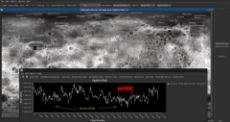
1565652292_2.jpg (472.8 KB, 1920x1017, Mercury Topography HMR Middle and 180° opposite.jpg)
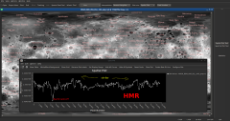
1565652292_3.jpg (485.0 KB, 1921x1019, Mercury Topography HMR North and 180° opposite.jpg)
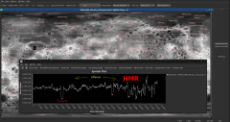
I've been wondering about how similar the HMR valley and its 180° opposite valley are. I've done a topography of the North, Mid and South of the HMR valley and its opposite partner. The Mid and South seem to be similar and consistent with the slow erosion caused by Taurid (and friends) meteorite erosion (as they swing into the sun and Mercury swings out into them).
However the North HMR valley shows a strong difference. It is pockmarked by a swarm of craters that are deep. If I assume black looking craters are likely to be newer (black means deep, not filled in by meteor dust over centuries) then the missing HMR single crater is actually viewable multiple craters overlaid on a pre-existing valley.
This implies a swarm of Mg rich material hit Mercury. Two sources could be Asteroid Belt collion/break up or sun flung metal swarm. Because the HMR extends toward the equator but with less density of Mg and widely despersed, perhaps the centrifugal rotation of Mercury has spread the molten light Mg south. A look at the topography did not suggest the equator was downhill.
However the North HMR valley shows a strong difference. It is pockmarked by a swarm of craters that are deep. If I assume black looking craters are likely to be newer (black means deep, not filled in by meteor dust over centuries) then the missing HMR single crater is actually viewable multiple craters overlaid on a pre-existing valley.
This implies a swarm of Mg rich material hit Mercury. Two sources could be Asteroid Belt collion/break up or sun flung metal swarm. Because the HMR extends toward the equator but with less density of Mg and widely despersed, perhaps the centrifugal rotation of Mercury has spread the molten light Mg south. A look at the topography did not suggest the equator was downhill.
1565750710.jpg (92.7 KB, 855x681, 1908Apj....28...79E--Mg thrown into space by the sun.jpg)
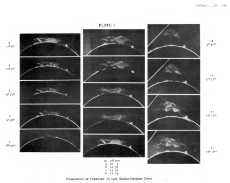
>... drawings show a moderately bright mass of prominences, extending from position-angle 89° to 121°, having bright condensations at 91° and 97°. The sodium and magnesium lines were noted as bright at 91°. The main mass was estimated at 50” in height at 8:50, and 85” an hour later. A smaller but bright prominence was situated at P.A. 135°, and this also increased during the observation from 45” to 80”.
http://articles.adsabs.harvard.edu/pdf/1908ApJ....28...79E
[And over 7 hours it accelerated from 1 km/s to 84km/s (302,400 km/h). SNRG™ confirmed.]
http://articles.adsabs.harvard.edu/pdf/1908ApJ....28...79E
[And over 7 hours it accelerated from 1 km/s to 84km/s (302,400 km/h). SNRG™ confirmed.]
Why accelerate after leaving the sun?
Solar Coronal Acceleration
>Close to the solar surface, the Sun’s gravity is strong enough to retain all these energetic particles. However, the force of gravity decreases with distance from the solar surface. Beyond a particular distance, the gravity will no longer be strong enough to contain the hot plasma. The plasma will start escaping from the Sun at this point. This steady leak of the corona continues at greater and greater speeds, until the stream of particles develops into a wind, which blows at supersonic speeds.
...
>The solar physicist Eugene Parker predicted the existence of the wind and estimated that it would reach the Earth with a speed of a few hundred kilometers per second. At that time, it was a rather bold prediction and his scientific paper on this prediction was rejected by referees. The then editor of The Astrophysical Journal, Subrahmanyan Chandrasekhar, overruled the referees and published the paper. Later on, with the advent of the Space Age, instruments aboard satellites indeed detected this wind. This was a real triumph for theoretical solar physics. Years later, it was noticed that the solar wind was very “gusty,” containing very-high-speed streams mixed with slower winds. These high-speed streams rotate with the Sun like a searchlight beam, and caress the Earth every 27 days. They seem to originate from large regions of single magnetic polarity on the Sun. These regions are different from sunspot fields, which are bipolar and compact. The unipolar magnetic regions also appeared as very dark regions in the x-ray pictures, and gained the name “coronal holes.” But the physical explanation for the acceleration of the solar wind to speeds much beyond the value predicted by Parker still eludes the scientists.
-- Daystar : a peep into the workings of the Sun by Venkatakrishnan, P. (2018)
[Read more] Solar Coronal Acceleration
>Close to the solar surface, the Sun’s gravity is strong enough to retain all these energetic particles. However, the force of gravity decreases with distance from the solar surface. Beyond a particular distance, the gravity will no longer be strong enough to contain the hot plasma. The plasma will start escaping from the Sun at this point. This steady leak of the corona continues at greater and greater speeds, until the stream of particles develops into a wind, which blows at supersonic speeds.
...
>The solar physicist Eugene Parker predicted the existence of the wind and estimated that it would reach the Earth with a speed of a few hundred kilometers per second. At that time, it was a rather bold prediction and his scientific paper on this prediction was rejected by referees. The then editor of The Astrophysical Journal, Subrahmanyan Chandrasekhar, overruled the referees and published the paper. Later on, with the advent of the Space Age, instruments aboard satellites indeed detected this wind. This was a real triumph for theoretical solar physics. Years later, it was noticed that the solar wind was very “gusty,” containing very-high-speed streams mixed with slower winds. These high-speed streams rotate with the Sun like a searchlight beam, and caress the Earth every 27 days. They seem to originate from large regions of single magnetic polarity on the Sun. These regions are different from sunspot fields, which are bipolar and compact. The unipolar magnetic regions also appeared as very dark regions in the x-ray pictures, and gained the name “coronal holes.” But the physical explanation for the acceleration of the solar wind to speeds much beyond the value predicted by Parker still eludes the scientists.
-- Daystar : a peep into the workings of the Sun by Venkatakrishnan, P. (2018)
"Cold" metal in the sun in 1814+ absorbing light.
(pic1) https://en.wikipedia.org/wiki/Fraunhofer%20lines
Magnesium line is called 'b'
Hot metal in the sun in 1890+ emitting light
...
>When some of the very best negatives of the solar spectrum are carefully examined, it is found that some of the sharp-edged, clean-cut, and unshaded lines of iron, chromium, manganese, titanium, etc., have a faint, dark shading just outside the edge of the lines. It is very faint and difficult to observe (only slightly darker than the general background of the solar spectrum), but is not due to contrast, as it is not always present. It is a difficult observation to make, but was observed for some time before the explanation forced itself upon me. The correct explanation undoubtedly is that this faint, dark shading (dark in the negative) is the remains of an emission line, either produced at the photosphere or lower down in the solar atmosphere than the absorption line.
...
>This emission line is rather broader than the absorption line (perhaps nearly two or three times as broad), and, consequently, is produced lower down in the solar atmosphere, where the pressure is much greater than in the strata giving us the absorption line.
...
>Examining the figures again we notice that there are traces of an emission line which must be produced at a higher altitude, as we see only the faint edges of this line (most of it being obliterated by the absorption of the central line)
...
>The central absorption line is rather strong in both cases, but not so strong as in the shaded lines of iron, magnesium, and aluminium.
...
https://ui.adsabs.harvard.edu/abs/1896ApJ.....3...89J
It isn't clear if the hot metal detected is from better human detection or the sun is actually heating more metal into incandescence. But the timing works well for the solar grand cycle and Mystery Airships.
[Read more] (pic1) https://en.wikipedia.org/wiki/Fraunhofer%20lines
Magnesium line is called 'b'
Hot metal in the sun in 1890+ emitting light
...
>When some of the very best negatives of the solar spectrum are carefully examined, it is found that some of the sharp-edged, clean-cut, and unshaded lines of iron, chromium, manganese, titanium, etc., have a faint, dark shading just outside the edge of the lines. It is very faint and difficult to observe (only slightly darker than the general background of the solar spectrum), but is not due to contrast, as it is not always present. It is a difficult observation to make, but was observed for some time before the explanation forced itself upon me. The correct explanation undoubtedly is that this faint, dark shading (dark in the negative) is the remains of an emission line, either produced at the photosphere or lower down in the solar atmosphere than the absorption line.
...
>This emission line is rather broader than the absorption line (perhaps nearly two or three times as broad), and, consequently, is produced lower down in the solar atmosphere, where the pressure is much greater than in the strata giving us the absorption line.
...
>Examining the figures again we notice that there are traces of an emission line which must be produced at a higher altitude, as we see only the faint edges of this line (most of it being obliterated by the absorption of the central line)
...
>The central absorption line is rather strong in both cases, but not so strong as in the shaded lines of iron, magnesium, and aluminium.
...
https://ui.adsabs.harvard.edu/abs/1896ApJ.....3...89J
It isn't clear if the hot metal detected is from better human detection or the sun is actually heating more metal into incandescence. But the timing works well for the solar grand cycle and Mystery Airships.
1566103650.jpg (309.8 KB, 752x978, 1895 hot calcium in solar chromosphere, missing in 1893.jpg)
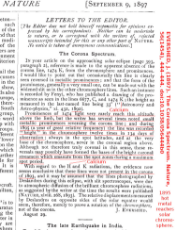
1893 No metallic prominences in the solar chromosphere (above the photosphere).
1895 H and K (Calcium metal) Fraunhofer lines seen in the metallic prominences in the chromosphere.
Warming up for Mystery Airships?
1895 H and K (Calcium metal) Fraunhofer lines seen in the metallic prominences in the chromosphere.
Warming up for Mystery Airships?
Currently testing potential colleagues for verifications and connections. New blood inhabiting physics stations. YOUNG new blood not impressed by jew schooled cucks & politically correct appointees. Can't speak.
>>106900
Colored rains not isolated to India. New colleagues found multiples in Canada, Greenland, Iceland, Serbia, northwestern China, Japan, Norway, Sweden, average timetables of 4-22 years on average per region. Prepare thine posterior Herr Vril: discovered colored rains in Australia, then whole of South America; Argentina, Chile, Brazil. South Pacific islands? Hundreds of records.
No silicon lead to new working-on-it theory = metallic solar ejections. Don't even know what I'm looking for now. Fun maybe/perhaps. Rightfully accused you of same: must follow facts without trust.
>>106900
Colored rains not isolated to India. New colleagues found multiples in Canada, Greenland, Iceland, Serbia, northwestern China, Japan, Norway, Sweden, average timetables of 4-22 years on average per region. Prepare thine posterior Herr Vril: discovered colored rains in Australia, then whole of South America; Argentina, Chile, Brazil. South Pacific islands? Hundreds of records.
No silicon lead to new working-on-it theory = metallic solar ejections. Don't even know what I'm looking for now. Fun maybe/perhaps. Rightfully accused you of same: must follow facts without trust.
>>110763
I have 45 years of solar prominence data from 1903 to 1948 from an Indian observatory that was tasked by the government to learn more about the relationship between the sun and droughts. The data isn't digitised and needs to be if we want to analyse the relationship between metallic solar ejections, UFOs and other phenomena.
There are 81 documents, a sample of the quality is:
http://articles.adsabs.harvard.edu/pdf/1906KodOB...1..121S
http://articles.adsabs.harvard.edu/pdf/1950KodOB...5..243D
I have a list of all the documents. They are all on adsabs.
Relevant descriptions for metal bearing solar ejections are: bright (may or may not be metallic, metallic spectrum can also be hidden by clouds, mist, haze, etc if it was there), brilliant, metal(lic), b1 b2 or b4 (Fraunhofer Magnesium).
Regarding silicon, none of the documents mention silicon lines. This has me greatly puzzled. Silicon spectrum was known in 1906. Therefore it isn't part of the Fraunhofer lines (1814) but this shouldn't stop the recording of the frequencies for Si post 1906. I still need to work out what is happening here, it is contradictory. They mention Mg and Fe but between both in a sun should be Si and S. Does Si and S end up in the corona instead?
Possibilities include:
* Silicon lines were misinterpreted as other elements. Solution use https://physics.nist.gov/PhysRefData/ASD/lines_form.html to re-evaluted the 81 papers/45 years of data.
* Silicon behaves differently, for example it might collect in the corona along with S.
* Scientists didn't develop the habit of looking for it.
* Si lines aren't very strong.
Regarding the origin of the metal I have 2 ideas.
1) It comes from the solar core and occurs more-so when the sun convection is low (core temp high), when the convection ramps up it gouges the core. This idea has a major flaw. The solar core is surrounded by the radiative zone, it is called that because it is so dense it can't convect. Therefore gouging the core seems unlikely, therefore theory 2).
2) The sun eats rock and shits metal, the rock atoms falls as a sediment over the top of the radiative zone. This happens especially when the convection is low (Maunder/Dalton Minimum). When the sun spins up the sediment is pulled back into circulation. The outward thrust of the convection currents is near the equator and metallic prominences are said to be near the equator. Still the missing silicon is a problem requiring an answer.
I propose we work together on converting these 81 documents to text. Then, because of the non-rigorous nature of the data, we chart the ratio of bright, metallic, b# prominences vs total prominences, rather than do a straight count. This sidesteps the following issues with the data:
* Scientists can only measure prominences beyond the solar edge (sun disk is too bright).
* They can't see prominences on the far side either.
* They are affected by terrestrial weather in small or total ways.
* The observations are not of the same length or at the same time of day.
I expect to see a rise and fall in the ratio of bright/metallic/b# prominences, there may be signs of a 10, 11 or 22 year cycle or solar grand cycle.
We can then back that up with the crude, less trustworthy, straight count. And even plot count per viewing time ratios.
Hints of a cyclic possibility are shown in http://articles.adsabs.harvard.edu/pdf/1939ApJ....89..486B (second last page) where there is an increase in count and complexity of metals leading up to 1919 and then falls off again into the 1930s. (1913-1937 is also when the Taurids disappeared >>104116, less rock for the sun to eat?)
A simpler project, that would test the viability of the larger project, would be to count the b1,b2 (Mg) emission prominences per total prominences and see if any crude correlations show up. If that implies success we can push further in many directions, higher time resolution, wider selection of metals/elements (Ca reacts with water to make CaO and H2, disappearing ghost rockets in snow?).
[Read more] I have 45 years of solar prominence data from 1903 to 1948 from an Indian observatory that was tasked by the government to learn more about the relationship between the sun and droughts. The data isn't digitised and needs to be if we want to analyse the relationship between metallic solar ejections, UFOs and other phenomena.
There are 81 documents, a sample of the quality is:
http://articles.adsabs.harvard.edu/pdf/1906KodOB...1..121S
http://articles.adsabs.harvard.edu/pdf/1950KodOB...5..243D
I have a list of all the documents. They are all on adsabs.
Relevant descriptions for metal bearing solar ejections are: bright (may or may not be metallic, metallic spectrum can also be hidden by clouds, mist, haze, etc if it was there), brilliant, metal(lic), b1 b2 or b4 (Fraunhofer Magnesium).
Regarding silicon, none of the documents mention silicon lines. This has me greatly puzzled. Silicon spectrum was known in 1906. Therefore it isn't part of the Fraunhofer lines (1814) but this shouldn't stop the recording of the frequencies for Si post 1906. I still need to work out what is happening here, it is contradictory. They mention Mg and Fe but between both in a sun should be Si and S. Does Si and S end up in the corona instead?
Possibilities include:
* Silicon lines were misinterpreted as other elements. Solution use https://physics.nist.gov/PhysRefData/ASD/lines_form.html to re-evaluted the 81 papers/45 years of data.
* Silicon behaves differently, for example it might collect in the corona along with S.
* Scientists didn't develop the habit of looking for it.
* Si lines aren't very strong.
Regarding the origin of the metal I have 2 ideas.
1) It comes from the solar core and occurs more-so when the sun convection is low (core temp high), when the convection ramps up it gouges the core. This idea has a major flaw. The solar core is surrounded by the radiative zone, it is called that because it is so dense it can't convect. Therefore gouging the core seems unlikely, therefore theory 2).
2) The sun eats rock and shits metal, the rock atoms falls as a sediment over the top of the radiative zone. This happens especially when the convection is low (Maunder/Dalton Minimum). When the sun spins up the sediment is pulled back into circulation. The outward thrust of the convection currents is near the equator and metallic prominences are said to be near the equator. Still the missing silicon is a problem requiring an answer.
I propose we work together on converting these 81 documents to text. Then, because of the non-rigorous nature of the data, we chart the ratio of bright, metallic, b# prominences vs total prominences, rather than do a straight count. This sidesteps the following issues with the data:
* Scientists can only measure prominences beyond the solar edge (sun disk is too bright).
* They can't see prominences on the far side either.
* They are affected by terrestrial weather in small or total ways.
* The observations are not of the same length or at the same time of day.
I expect to see a rise and fall in the ratio of bright/metallic/b# prominences, there may be signs of a 10, 11 or 22 year cycle or solar grand cycle.
We can then back that up with the crude, less trustworthy, straight count. And even plot count per viewing time ratios.
Hints of a cyclic possibility are shown in http://articles.adsabs.harvard.edu/pdf/1939ApJ....89..486B (second last page) where there is an increase in count and complexity of metals leading up to 1919 and then falls off again into the 1930s. (1913-1937 is also when the Taurids disappeared >>104116, less rock for the sun to eat?)
A simpler project, that would test the viability of the larger project, would be to count the b1,b2 (Mg) emission prominences per total prominences and see if any crude correlations show up. If that implies success we can push further in many directions, higher time resolution, wider selection of metals/elements (Ca reacts with water to make CaO and H2, disappearing ghost rockets in snow?).
>>110763
I just thought of a reason why the silicon could be missing, but Mg and Fe present. Fe is pulled up from the silt because it is magnetic. Mg is pulled up because it is light. Si is denser and not magnetic, it is harder to churn up.
Also notice to the two deep "gouges" in >>107577 pic 2, lower graph, post 1900. Is that the cause?
I just thought of a reason why the silicon could be missing, but Mg and Fe present. Fe is pulled up from the silt because it is magnetic. Mg is pulled up because it is light. Si is denser and not magnetic, it is harder to churn up.
Also notice to the two deep "gouges" in >>107577 pic 2, lower graph, post 1900. Is that the cause?
1566481257_1.png (15.5 KB, 655x454, solar metallic prominences raw count 1912-1948.png)
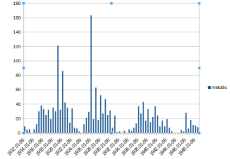
1566481257_2.png (339.6 KB, 1368x751, 1949KodOB...5..189D-metal.png)
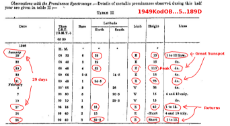
First pass at analysing the solar prominence data (pic). This is a raw count of metallic prominences on the limb of the sun for a 6 month period. It doesn't yet compare the raw count to all prominences seen or to the amount of viewing time, so it may not be an apples to apples comparison. It does suggest a 10 year cycle. UFOs also show a 10 year cycle. It might be an 11 year cycle, which is what the sun is said to have.
I want to add another hypothesis to why the metal is there aside from 1) and 2) at >>110885 :
3) Meteors might be orbiting such that they graze the sun every 10-11 years turning them from rock to metal. No need to enter the sun.
This brings up a problem and a unsatisfactory solution. Orbits longer than 4 years (and in the plane of the ecliptic) will eventually run into Jupiter who will eat them or throw them away. However an orbit that is around 11.862 years (Jupiter's orbital period) that never ran into Jupiter's gravity would also never run into it in the future. But the chart doesn't support a nearly 12 year cycle. It matches a 10 year cycle.
UFOs = 10 year cycle. >>101941 (pic3)
Metallic prominences = 10 year cycle.
Sun spots = 11 year cycle.
Jupiter = nearly 12 year cycle.
The sun might have a 10 year metal throwing cycle. The metal likely comes from rocks it has eaten rather than the core. Perhaps the lower convection current has a 10 year cycle and the upper has an 11 year cycle. >>107578 (pic2) The upper makes sunspots, the lower scoops up Mg and Fe and passes it to the upper for expulsion at the equator.
There seems to be a hint of higher counts in one half of the year over the other half. This might be Earth seasonal weather effects. A by-month break down would show this.
Metallic prominence data from 1903 to 1911 was not nicely tabulated by the scientists and will need to be derived through a more laborious process. A crude look at the 1903-1911 data by searching for "metal" or "bri" (bright or brilliant) shows:
1903-1904 : 89 #############################################
1905.01-06: 79 ########################################
1905.07-12: 63 ################################
1906.01-06: 71 ####################################
1906.07-12: 35 ##################
1907.01-06: 72 ####################################
1907.07-12: 49 #########################
1908.01-06: 91 ##############################################
1908.07-12: missing data, to be located later.
1909.01-06: 38 ###################
1909.07-12: 34 #################
1910.01-06: 44 ######################
1910.07-12: 20 ##########
1911.01-06: 21 ###########
1911.07-12: 18 #########
This hints at a peak going back to mystery airships, perhaps.
The data for 1946 first metallic prominence (pic2) correlates with the Jan 29 Great Sunspot ( >>101892 pic2 ). It also seems to reappear 29 days later in the same latitude (pic2). The sun rotates about every 28 days. This might mean the Great Sunspot of 1946 spewed metal for 30 days. The metallic prominence was at latitude 29-34N (pic2), the GS was at centred at 26N. The co-ordinates and timing are very close. This would be a good candidate for splashing Mercury with Mg. The 30 day limit explains no Mg on the opposite of the Mercury HMR (88 day orbit > 30 days of sun Mg splashing).
Everything looks good for a 10 year metal throwing cycle, so far.
[Read more] I want to add another hypothesis to why the metal is there aside from 1) and 2) at >>110885 :
3) Meteors might be orbiting such that they graze the sun every 10-11 years turning them from rock to metal. No need to enter the sun.
This brings up a problem and a unsatisfactory solution. Orbits longer than 4 years (and in the plane of the ecliptic) will eventually run into Jupiter who will eat them or throw them away. However an orbit that is around 11.862 years (Jupiter's orbital period) that never ran into Jupiter's gravity would also never run into it in the future. But the chart doesn't support a nearly 12 year cycle. It matches a 10 year cycle.
UFOs = 10 year cycle. >>101941 (pic3)
Metallic prominences = 10 year cycle.
Sun spots = 11 year cycle.
Jupiter = nearly 12 year cycle.
The sun might have a 10 year metal throwing cycle. The metal likely comes from rocks it has eaten rather than the core. Perhaps the lower convection current has a 10 year cycle and the upper has an 11 year cycle. >>107578 (pic2) The upper makes sunspots, the lower scoops up Mg and Fe and passes it to the upper for expulsion at the equator.
There seems to be a hint of higher counts in one half of the year over the other half. This might be Earth seasonal weather effects. A by-month break down would show this.
Metallic prominence data from 1903 to 1911 was not nicely tabulated by the scientists and will need to be derived through a more laborious process. A crude look at the 1903-1911 data by searching for "metal" or "bri" (bright or brilliant) shows:
1903-1904 : 89 #############################################
1905.01-06: 79 ########################################
1905.07-12: 63 ################################
1906.01-06: 71 ####################################
1906.07-12: 35 ##################
1907.01-06: 72 ####################################
1907.07-12: 49 #########################
1908.01-06: 91 ##############################################
1908.07-12: missing data, to be located later.
1909.01-06: 38 ###################
1909.07-12: 34 #################
1910.01-06: 44 ######################
1910.07-12: 20 ##########
1911.01-06: 21 ###########
1911.07-12: 18 #########
This hints at a peak going back to mystery airships, perhaps.
The data for 1946 first metallic prominence (pic2) correlates with the Jan 29 Great Sunspot ( >>101892 pic2 ). It also seems to reappear 29 days later in the same latitude (pic2). The sun rotates about every 28 days. This might mean the Great Sunspot of 1946 spewed metal for 30 days. The metallic prominence was at latitude 29-34N (pic2), the GS was at centred at 26N. The co-ordinates and timing are very close. This would be a good candidate for splashing Mercury with Mg. The 30 day limit explains no Mg on the opposite of the Mercury HMR (88 day orbit > 30 days of sun Mg splashing).
Everything looks good for a 10 year metal throwing cycle, so far.
Challenging the sun throwing metal hypothesis to see if it stands up
We can test the "Great Sunspot of January 29, 1946 (size 5202MvH) = Ghost Rockets" by looking at the even larger "Great Sunspot of March 30, 1947 (size 6132MvH) = Flying Disks" (pic1).
Looking at http://articles.adsabs.harvard.edu/pdf/1950KodOB...5..225D we see that no metallic prominces are mentioned for March 30 (page3). How embarrassing! Being confused I looked over the rest of the paper for large events at the latitude -24:47 (pic) ie. 24°S. I noticed that under the section Solar Flares (page8) there is a list of solar flares at 21-23°S. The dates range from Feb 7 to Apr 10. This got me wondering about the lifespan of this GS.
Heading over to the Greenwich Solar Observatory (pics) data I learn that this GS is numbered 14886 (pic2) and it is a member of the "recurrent sunspots" numbered 1439. What this means is the GS rotated around the sun multiple times. It was born around Feb 5 and died about May 11. Looking back at the solar flares at that latitude they start at Feb 7 and end Apr 10. The flares fit within the GS lifespan. Then I went back and looked at the Metallic Prominences list for that time frame. There are two metallic prominences at 25°S (Apr 6) and 27°S (Apr 30), 7 days and 31 days after the GS max.
But the metal throwing fun does not end there. Do solar flares throw metal? Books and Wikipedia focus on solar flares as being sub-atomic particles, electrons and beta particles and destroying artificial satellites, but https://ui.adsabs.harvard.edu/abs/1950ApJ...111..572R/abstract and others informs us that solar flares are a laundry list of elements including Mg and Fe.
Therefore the GS of March 30, 1947 was throwing metal; (born Feb 5), Feb 7, Feb 13, Feb 17, Mar 7, Mar 12, Mar 14, Mar 15, Apr 6, Apr 9, Apr 10 & Apr 30, (dead May 11). And that's only the ones we caught.
"GS1946Jan" threw metal for about 30 days (1 solar rotation), "GS1947Mar" threw metal for about 112 days (4 solar rotations).
Some caveats, the longitude of the GS1947Mar solar flares is variable and not often associated directly with the GS location. This can be explained by the fact that sun spots and metal throwing aren't directly related, they are both off-shots of longitudinal (horizontal) magnetic field lines being twisted by high convection speeds. You can have one without the other, or both in different places on the same latitude. The other caveat is we don't have direct evidence that the 112 days of solar flares actually had metal in them, but it is expected because solar flares are mega prominences. Large prominences come from large convection, large convection scoops up metal silt. And 1950 spectrograph of solar flares showed metals and more.
I am rather surprised that the sun does extended multi-day metal throwing.
Solar flares and sunspots: https://spaceplace.nasa.gov/solar-activity/en/
[Read more] We can test the "Great Sunspot of January 29, 1946 (size 5202MvH) = Ghost Rockets" by looking at the even larger "Great Sunspot of March 30, 1947 (size 6132MvH) = Flying Disks" (pic1).
Looking at http://articles.adsabs.harvard.edu/pdf/1950KodOB...5..225D we see that no metallic prominces are mentioned for March 30 (page3). How embarrassing! Being confused I looked over the rest of the paper for large events at the latitude -24:47 (pic) ie. 24°S. I noticed that under the section Solar Flares (page8) there is a list of solar flares at 21-23°S. The dates range from Feb 7 to Apr 10. This got me wondering about the lifespan of this GS.
Heading over to the Greenwich Solar Observatory (pics) data I learn that this GS is numbered 14886 (pic2) and it is a member of the "recurrent sunspots" numbered 1439. What this means is the GS rotated around the sun multiple times. It was born around Feb 5 and died about May 11. Looking back at the solar flares at that latitude they start at Feb 7 and end Apr 10. The flares fit within the GS lifespan. Then I went back and looked at the Metallic Prominences list for that time frame. There are two metallic prominences at 25°S (Apr 6) and 27°S (Apr 30), 7 days and 31 days after the GS max.
But the metal throwing fun does not end there. Do solar flares throw metal? Books and Wikipedia focus on solar flares as being sub-atomic particles, electrons and beta particles and destroying artificial satellites, but https://ui.adsabs.harvard.edu/abs/1950ApJ...111..572R/abstract and others informs us that solar flares are a laundry list of elements including Mg and Fe.
Therefore the GS of March 30, 1947 was throwing metal; (born Feb 5), Feb 7, Feb 13, Feb 17, Mar 7, Mar 12, Mar 14, Mar 15, Apr 6, Apr 9, Apr 10 & Apr 30, (dead May 11). And that's only the ones we caught.
"GS1946Jan" threw metal for about 30 days (1 solar rotation), "GS1947Mar" threw metal for about 112 days (4 solar rotations).
Some caveats, the longitude of the GS1947Mar solar flares is variable and not often associated directly with the GS location. This can be explained by the fact that sun spots and metal throwing aren't directly related, they are both off-shots of longitudinal (horizontal) magnetic field lines being twisted by high convection speeds. You can have one without the other, or both in different places on the same latitude. The other caveat is we don't have direct evidence that the 112 days of solar flares actually had metal in them, but it is expected because solar flares are mega prominences. Large prominences come from large convection, large convection scoops up metal silt. And 1950 spectrograph of solar flares showed metals and more.
I am rather surprised that the sun does extended multi-day metal throwing.
Solar flares and sunspots: https://spaceplace.nasa.gov/solar-activity/en/
>>111011
>"GS1946Jan" threw metal for about 30 days (1 solar rotation)
This seemed suspiciously too close to 1 rotation so I relooked at it from the Royal Observatory, Greenwich data (pics). The recurrent sunspot #1390 existed from 29-01-1946 and died 08-05-1946. I realised then I was not thinking large enough. Another large spot recurrent #1406 existed from 19-07-1947* until 30-08-1946 and reached 4720 MvH in size. Stepping back even further the larger spots of greater than 3000 MvH started in 1892, max'ed in 1947 and fell below 3000 MvH in 1990 http://www.cv-helios.net/RGO-NOAA-USAF.pdf matching UFOs >>70176 pic.
* Ghost Rockets:
>The best known of these crashes occurred on July 19, 1946, into Lake Kölmjärv, Sweden. Witnesses reported a gray, rocket-shaped object with wings crashing in the lake. One witness interviewed heard a thunderclap, possibly the object exploding. However, a 3-week military search conducted in intense secrecy again turned up nothing.
-- https://en.wikipedia.org/wiki/Ghost_rockets
So the UFO situation can be explained with:
1) The sun throws metal >>109408 >>110905 , especially Mg that burns bright white, and Fe, perhaps Ca and more. It ramps this up every 10 years especially between 1892 and 1990 as shown by max sun spot sizes. >>111011 pic1. UFOs have a 10 year cycle >>101941 pic3. Both involve very fast flying metal. When the sunspot max shrinks the classic Flying Discs go away. The 10 year cycle is unlikely to be permanent, as per the multi-century cycle of the sun >>107577 .
2) Man-made fake Hollywood "aliens" + MKULTRA + biological harvesting: http://constitution.org/abus/mkt/cannon_controllers.pdf and Afternon's information.
---
Are we done, AfterNon? Is there a mystery left regarding UFOs? Do we save the world now, from perpetual fantasies? Do they want to be saved, when it gets replaced with horror and being lied to by those trusted?
[Read more] >"GS1946Jan" threw metal for about 30 days (1 solar rotation)
This seemed suspiciously too close to 1 rotation so I relooked at it from the Royal Observatory, Greenwich data (pics). The recurrent sunspot #1390 existed from 29-01-1946 and died 08-05-1946. I realised then I was not thinking large enough. Another large spot recurrent #1406 existed from 19-07-1947* until 30-08-1946 and reached 4720 MvH in size. Stepping back even further the larger spots of greater than 3000 MvH started in 1892, max'ed in 1947 and fell below 3000 MvH in 1990 http://www.cv-helios.net/RGO-NOAA-USAF.pdf matching UFOs >>70176 pic.
* Ghost Rockets:
>The best known of these crashes occurred on July 19, 1946, into Lake Kölmjärv, Sweden. Witnesses reported a gray, rocket-shaped object with wings crashing in the lake. One witness interviewed heard a thunderclap, possibly the object exploding. However, a 3-week military search conducted in intense secrecy again turned up nothing.
-- https://en.wikipedia.org/wiki/Ghost_rockets
So the UFO situation can be explained with:
1) The sun throws metal >>109408 >>110905 , especially Mg that burns bright white, and Fe, perhaps Ca and more. It ramps this up every 10 years especially between 1892 and 1990 as shown by max sun spot sizes. >>111011 pic1. UFOs have a 10 year cycle >>101941 pic3. Both involve very fast flying metal. When the sunspot max shrinks the classic Flying Discs go away. The 10 year cycle is unlikely to be permanent, as per the multi-century cycle of the sun >>107577 .
2) Man-made fake Hollywood "aliens" + MKULTRA + biological harvesting: http://constitution.org/abus/mkt/cannon_controllers.pdf and Afternon's information.
---
Are we done, AfterNon? Is there a mystery left regarding UFOs? Do we save the world now, from perpetual fantasies? Do they want to be saved, when it gets replaced with horror and being lied to by those trusted?
1566726479.jpg (215.1 KB, 734x900, 1947 09 15 Tampa Bay Times _gallup Dupont People.jpg)
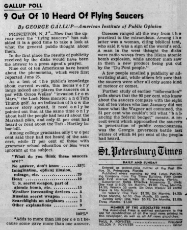
Public opinion on Flying Saucers in 1947.
>no aliens
>some kind of meteor or comet
https://ufocon.blogspot.com/2019/08/915147-gallup-poll-from-kolyma.html
>no aliens
>some kind of meteor or comet
https://ufocon.blogspot.com/2019/08/915147-gallup-poll-from-kolyma.html
>>111544
From the same blog....
>UFOs are spacecraft of advanced species from outer space (the cosmos)
>UFOs are projections of human psyches
>UFOs are advanced aircraft of an Earthian military
>UFOs are delusional hallucinations of mad people
>UFOs are errant computer mice or misbehaving pixels in a Matrix-like game
>UFOs are Frankensteinian quantum particles that have escaped the quantum world
>UFOs are a concretized mythos
>UFOs are visitors from time (past or future)
>UFOs are insertions from another dimension
>UFOs are the fictive creation of a few humorous jokers
>UFOs are unknown living species
>UFOs aren’t
>UFOs are ????
>RR
https://ufocon.blogspot.com/2019/08/heres-where-we-are-regarding-ufos.html
Should someone tell him?
[Read more] From the same blog....
>UFOs are spacecraft of advanced species from outer space (the cosmos)
>UFOs are projections of human psyches
>UFOs are advanced aircraft of an Earthian military
>UFOs are delusional hallucinations of mad people
>UFOs are errant computer mice or misbehaving pixels in a Matrix-like game
>UFOs are Frankensteinian quantum particles that have escaped the quantum world
>UFOs are a concretized mythos
>UFOs are visitors from time (past or future)
>UFOs are insertions from another dimension
>UFOs are the fictive creation of a few humorous jokers
>UFOs are unknown living species
>UFOs aren’t
>UFOs are ????
>RR
https://ufocon.blogspot.com/2019/08/heres-where-we-are-regarding-ufos.html
Should someone tell him?
After looking at the metal throwing cycle >>110905 I decided to look at the sun's magnetic field through history. https://arxiv.org/pdf/1907.06492.pdf
I expect that the magnetic field strength is related to the solar convection speed(s). And I expect metal ions and Fe to be thrown the most when the mag. field is strong. The graph seems to bear this out. It also bring up the posibility of obtaing the raw data and comparing the very high mag field days with UFO sighting spikes. The low MF dates, years ending in 4, matches well with the metal prominence low points.
Interesting to see that post 1976 the cycle destabilised, this is the same time flying discs waned.
I expect that the magnetic field strength is related to the solar convection speed(s). And I expect metal ions and Fe to be thrown the most when the mag. field is strong. The graph seems to bear this out. It also bring up the posibility of obtaing the raw data and comparing the very high mag field days with UFO sighting spikes. The low MF dates, years ending in 4, matches well with the metal prominence low points.
Interesting to see that post 1976 the cycle destabilised, this is the same time flying discs waned.
1566863368.png (34.9 KB, 376x554, ADS-metallic-prominence-hits-by-year.png)

Digging around looking for a flaw in the sun hypothesis.
Science papers mentioning "metallic prominence". Nicely encompassing the Airship/Disc era.
Science papers mentioning "metallic prominence". Nicely encompassing the Airship/Disc era.
[Reply] [Last 50 Posts] [Last 100 Posts] [Last 200 Posts]
You are viewing older replies. Click [View All] or [Last n Posts] to vew latest posts.
Clicking update will load all posts posted after last post on this page.
Post pagination: [Prev] [1-50] [51-100] [101-150] [151-200] [201-250] [251-300] [301-350] [351-400] [401-450] [451-500] [501-550] [551-600] [601-650] [651-700] [701-750] [751-756] [Next] [Live (last 50 replies)]
756 replies | 667 files | 66 UUIDs | Page 21
[Add to Thread Watcher]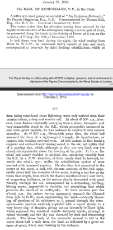
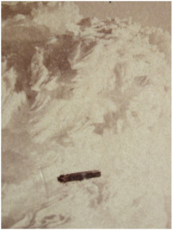
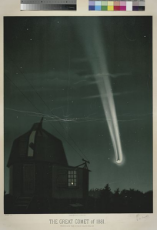
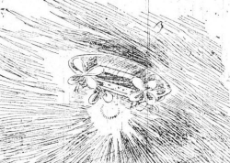

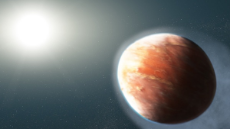
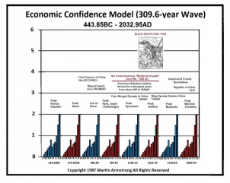
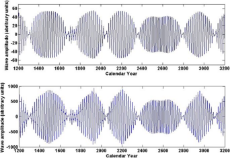
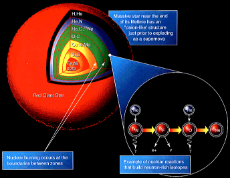
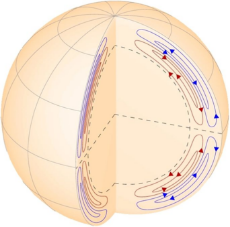



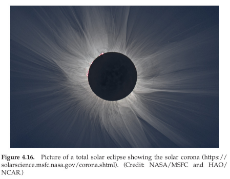

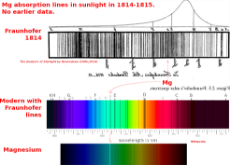

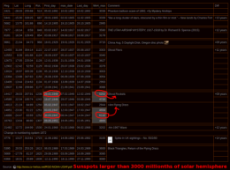
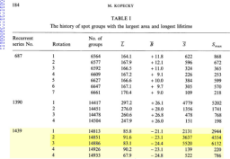
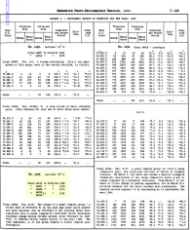
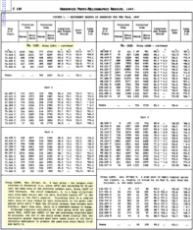
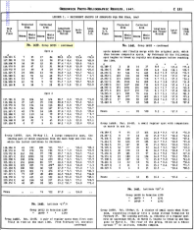
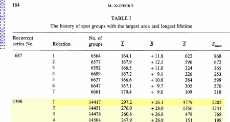
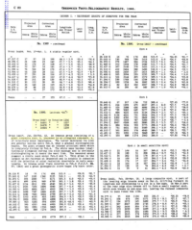
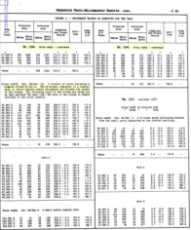

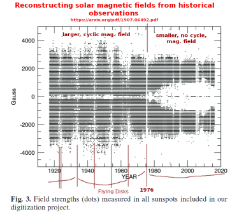
 Ex: Type :littlepip: to add Littlepip
Ex: Type :littlepip: to add Littlepip  Ex: Type :eqg-rarity: to add EqG Rarity
Ex: Type :eqg-rarity: to add EqG Rarity 